

EDITORIAL
In this issue of TM Broadcast International magazine, we bring you insights and guidance on the revolutionary advances in broadcast and media production. First, our readers will find an exclusive interview with Isidoro Moreno of OBS, who discusses the innovative broadcast technologies that will dazzle audiences at the Paris 2024 Summer Olympics. The Games are always a proving ground for cutting-edge media technologies, and Paris 2024 will be no exception, showcasing a range of next-generation broadcast strategies that promise to transform the viewer experience worldwide.
We also explore the possibilities of 6G with Alex Lawrence, editor of 6GWorld. While 5G is still being rolled out, the industry buzz around 6G promises even more transformative potential in terms of speed, reliability, and the types of immersive experiences that could be delivered. This conversation is critical, as it sets the stage for what could be the next big leap in our industry’s connectivity and content delivery paradigms.
In addition to our focus on key industry events, this issue includes a preview of CABSAT and MPTS London. These events
Editor in chief
Javier de Martín editor@tmbroadcast.com
Key account manager
Patricia Pérez ppt@tmbroadcast.com
Editorial staff
press@tmbroadcast.com
Creative Direction
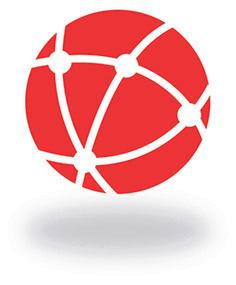
are critical for professionals who want to stay abreast of the latest tools, trends, and technologies. CABSAT will focus on the market dynamics of the vibrant MENA region, while MPTS London will continue to be a hub for innovation and discussion in the broader European context.
We also feature an interview with Lasse Brogard Kempf, Director of Technology at Blast, who provides insight into the evolving esports broadcasting scene. As esports continues to grow in popularity, understanding the technological backbone that supports its expansive growth is essential for any media professional.
Finally, we spotlight LAB Cyanview, known for their innovation in camera systems, and this issue is packed with valuable knowledge designed to empower and inform.
This issue of TM Broadcast International is designed not only to keep you informed, but also to inspire you to embrace the rapid changes in our industry. Join us as we explore the future of broadcast and media technology to ensure you stay ahead in this fast-paced, ever-evolving industry.
Mercedes González mercedes.gonzalez@tmbroadcast.com
Administration
Laura de Diego administration@tmbroadcast.com
Published in Spain ISSN: 2659-5966
TM Broadcast International #129 May 2024
TM
3
Broadcast International is a magazine published by Daró Media Group SL Centro Empresarial Tartessos Calle Pollensa 2, oficina 14 28290 Las Rozas (Madrid), Spain Phone +34 91 640 46 43
OBS, TV Production of the Olympic Games, Paris 2024 Olympics
By Luis Sanz, Audiovisual Consultant
The XXXIII Summer Olympic Games will begin on July 26 in the city of Paris. Undoubtedly, it will be the biggest global sporting event of these years, until the XXXIV Games are held in the city Los Angeles in 2028. But, in addition, it will also the largest TV event of the time, both in audience and in operational and technological production.


SUMMARY 4 News PRODUCTS STORIES OF SUCCESS BUSINESS & PEOPLE 6 SPORTS | PARIS 2024
20 TECHNOLOGY | 6G Unveiling the future How 6G will transform broadcasting A conversation with Alexander Lawrence, Editor in Chief of ‘6G World’ 40


How BLAST.tv’s Cutting-Edge Technology is Shaping the Future of Esports
They arrived not long ago and are already the kings among the new generations: eSports are here to stay and their confluence with traditional broadcast formats is creating new ways to enjoy the possibilities that new telecommunications technologies make available to us. In this scene, BLAST.tv stands out as a beacon of innovation and excellence.
Lab test performed by CARLOS MEDINA Audiovisual Technology Expert and Advisor
5 82
production
TEST ZONE | CYANVIEW CY-RCP-J Multi-brand, multi-camera solution for REMI
CYANVIEW CY-RCP-J
TRADE SHOWS |
MPTS Unveiling the Future Dive into MPTS and CABSAT 2024 70 ESPORTS | BLAST.TV Revolutionizing the game
CABSAT &
52
Vislink Unveils Game-Changing DragonFly V at CABSAT
2024

Vislink is gearing up to showcase its cutting-edge products at CABSAT 2024, the premier event in the MEASA region for the broadcast industry. Running from May 21st to May 23rd at the Dubai World Trade Centre, the event is expected to draw over 18,000 industry professionals eager to explore the latest innovations.
At Stand No- S1-H20, Shk Saeed Hall 1, Vislink will unveil its next generation of live video communication solutions, including COFDM and 5G wireless camera solutions, Airborne Video Downlink Systems (AVDS), solutions for remote production in the cloud, and AI-automated live sports and in-studio systems. Visitors can expect to see market-leading products such as DragonFly V, the latest addition to Vislink’s lineup.
DragonFly V, the company’s newest miniature HEVC wireless video transmitter, is set to revolutionize real-time video capture from a variety of devices, including POV cameras, UAVs, and body-worn cameras. With its small size and weight under 55 grams, DragonFly V is one of the lightest and most portable transmitters available, yet it delivers high-definition

HDR video transmission with low latency and supports video formats up to 1080P-50/60 HDR.
According to Mickey Miller, CEO of Vislink, “With the launch of DragonFly V, we are redefining the boundaries of live broadcast technology. This tiny yet mighty device exemplifies Vislink’s commitment to delivering innovative, high-performance solutions that our customers have come to expect.”
The new transmitter offers portability and ease of use without sacrificing quality or functionality. Its energy-efficient design ensures extended operation times, critical for remote and dynamic live broadcasting environments. Equipped with either HDMI
or SDI inputs, it ensures compatibility with a wide range of cameras. Additionally, DragonFly V features Wi-Fi control and RS232 remote control for added convenience and flexibility in operations.
The device is poised to set a new standard for live broadcast equipment, offering unprecedented perspectives, reliability, and performance in the most demanding bespoke portable applications, including electronic news gathering, drone videography, and live sports broadcasting. Vislink is excited to showcase DragonFly V and its other industry-leading products at CABSAT 2024, demonstrating their commitment to pushing the boundaries of live video communication.
NEWS | PRODUCTS 6

Canon launches next-generation portable zoom lens for 4K broadcast cameras featuring newly developed digital drive unit

Canon Europe recently debuted the CJ27ex7.3B IASE T, a cuttingedge lens designed to capture 4K HDR image quality with wideangle and telephoto capabilities, boasting a newly developed e-Xs V drive unit. This portable zoom lens aims to redefine industry standards, offering compatibility with 4K broadcast cameras equipped with 2/3-inch sensors and showcasing a 7.3-197mm focal length range alongside a 2.0x optical extender.
Expanding upon Canon’s UHDxs series, this innovation promises users enhanced flexibility and an elevated shooting experience across a spectrum of scenarios, from live broadcasting to news gathering and studio production, the company stated.
The CJ27ex7.3B IASE T stands out with its unparalleled coverage and telephoto reach, currently leading the market in its category. Boasting a formidable 27x optical zoom spanning from an impressive 7.3mm wide angle to a 197mm focal length at the

telephoto end, this lens emerges as the ultimate tool for capturing the perfect shot.
Equipped with a built-in 2.0x extender, which effectively doubles the maximum reach to 394mm, the lens ensures consistent optical performance across all shooting scenarios, from close-ups of athletes on the field to expansive landscapes, offering unparalleled versatility for every situation.
From center to edge, the lens delivers great 4K HDR performance, underpinned by advanced technologies such as the multi-group zoom and floating focus system.
Engineered to meet broadcast standards, advanced chromatic aberration correction and coating technologies ensure sharp, precise rendering of subjects.
The CJ27ex7.3B IASE T debuts Canon’s upgraded e-Xs V drive unit, setting new benchmarks in operability and
functionality. Featuring three 20-pin connectors, a newly integrated USB-C port for diverse applications including remote control and firmware updates, and a 16-bit encoder for precise lens data output, this unit emerges as a great choice for a myriad of shooting scenarios, including virtual productions and on-the-go broadcasting.
Enhanced by its lightweight and compact design, the lens prioritizes mobility and user comfort. Weighing approximately 2.10kg, and featuring a re-engineered drive unit, the ergonomic design ensures exceptional maneuverability in various broadcasting scenarios, in the company’s words.
Jack Adair, Product Specialist at Canon Europe, commented, “With its expansive focal range, unrivaled optical performance, and advanced features, this lens truly sets a new standard for broadcasting equipment. Representing the culmination of our commitment to innovation, it empowers users to capture stunning footage in any environment, whether outdoors or in the studio. It marks the dawn of a new era in broadcast lenses, with a line we will continue to expand.”
NEWS | PRODUCTS 8
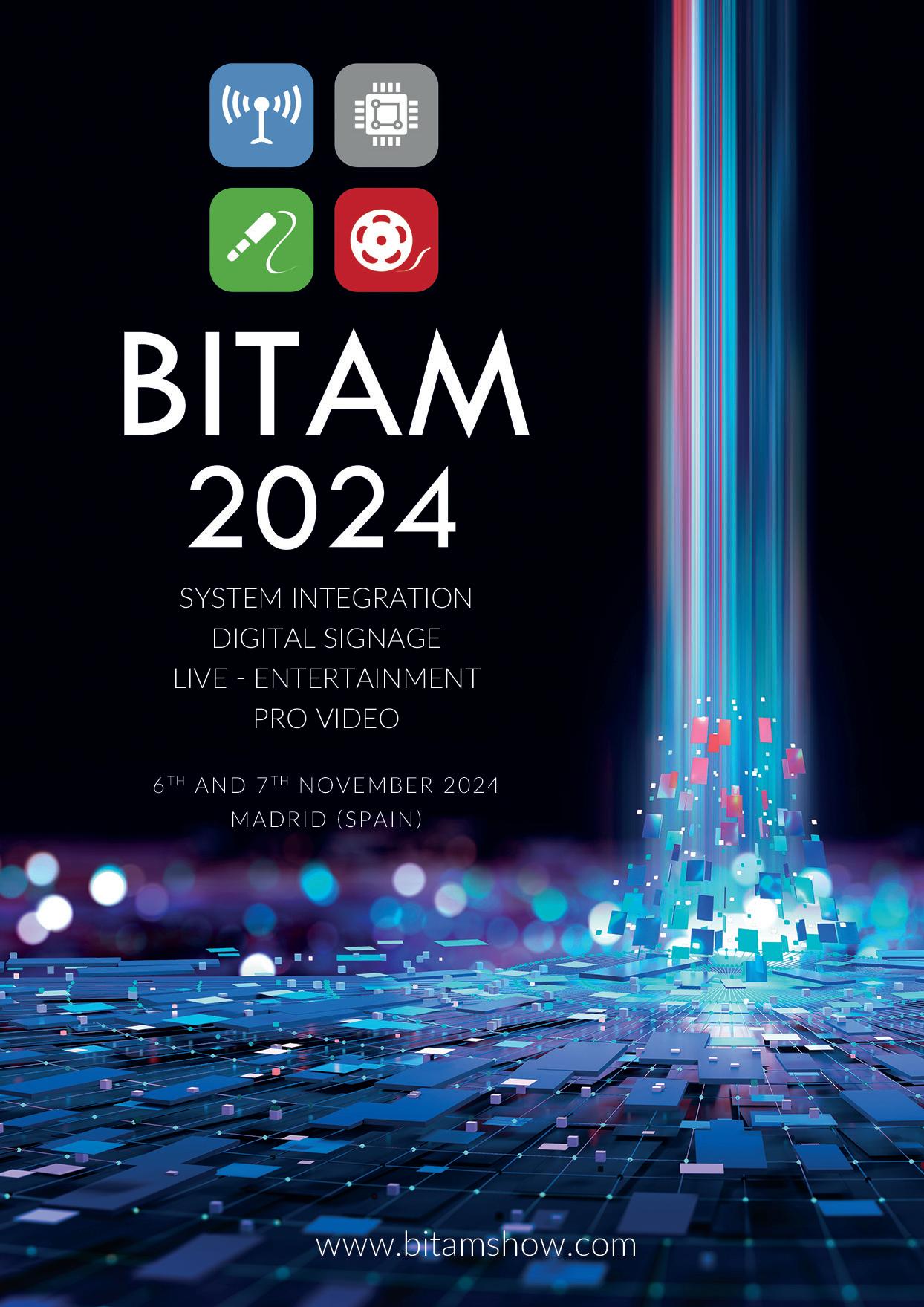
CABSAT 2024: next-gen media and satellite tech at Content Congress and SATExpo Summit
CABSAT 2024, the premier event in the Middle East focusing on content, broadcast, satellite, media, and entertainment, is gearing up to unveil the latest breakthroughs in global media, entertainment, and technology. Set to take place from May 21 to 23, 2024, at the Dubai World Trade Centre, this year’s edition promises a dynamic showcase of cutting-edge advancements in media and satellite technology.
At the heart of CABSAT 2024 are the Content Congress and SATExpo Summit, offering a platform for industry leaders, digital innovators, and content creators to delve into the evolving landscape of content creation and distribution. With the rise of OTT content consumption projected to reach 44.9 per cent of global internet users in 2024, the Content Congress will dissect key industry trends and explore topics such as immersive media experiences, content monetization strategies, and the future of broadcasting. Interactive panel discussions, keynote addresses, and workshops will provide valuable insights into the challenges and opportunities shaping the industry.
Moreover, the event presents an unparalleled opportunity for networking, facilitating connections among international media professionals and fostering discussions on future partnerships and collaborations. Featuring sessions like ‘What AI
could mean for the Middle East Media Industry’ and ‘The Arab Box Office,’ the Content Congress aims to stimulate dialogue on pressing issues facing the media landscape.
Manoj Abraham Mathew, Director of Studios & Events at Dubai Media, expressed enthusiasm for the transformative potential of CABSAT 2024, emphasizing its role as a catalyst for innovation and collaboration in the industry.
Complementing the Content Congress, the SATExpo Summit will serve as a hub for satellite technology enthusiasts and telecommunications experts to showcase groundbreaking solutions and discuss the latest advances in satellite communications. As the Middle East Satellite Communications Market is poised to grow from USD 3.35 billion in 2024 to USD 4.79 billion by 2029, with a CAGR of 7.40 per cent, the summit will explore topics ranging from commercial/enterprise connectivity services to nextgeneration launch technologies.
“In addition to serving as a key forum for stakeholders and
industry leaders to convene, CABSAT has been instrumental in providing us with the opportunity to learn about the latest developments and trends in the media and satellite technology domains. We firmly believe that this year’s conference will open doors to innovations and foster strategic partnerships that will completely transform the sector. On top of that, platforms such as CABSAT will certainly accelerate the industry’s transition to a new era of transformation and expedite the adoption of current market trends.” Sanjay Raina, Global Media and Entertainment Executive, commented.
In addition to technological innovations, CABSAT 2024 will also address the social and environmental responsibilities of the media industry, underscoring the importance of ethical business practices and sustainable development.
With its focus on fostering dialogue, driving innovation, and facilitating collaboration, CABSAT 2024 stands as a pivotal event shaping the future of the media, broadcast, and satellite industries in the region and beyond.

10 NEWS | STORIES OF SUCCESS

Dish TV LLC expands broadcast network with PlayBox Neo channel-in-a-box solution
PlayBox Neo has announced the successful implementation of a new multichannel playout system for Dish TV’s direct-to-home satellite television network in Mongolia. Headquartered in the capital city, Ulaanbaatar, Dish TV broadcasts a diverse range of over 150 international and Mongolian television channels via Koreasat 5A, complemented by NVOD, RVOD, and SVOD offerings.
Ariunbold Nasanjargal, Chief Technical Officer of Dish TV, expresses his satisfaction with the efficiency of PlayBox Neo television channel management systems, stating, “Our operations run smoothly thanks to the efficiency of PlayBox Neo television channel management systems. They are reliable, versatile, and fully compatible with our production, scheduling, and playout workflow.”
Nasanjargal continues, “Our staff appreciate the extensive automation facilities which allow them to supervise multiple channels while retaining the ability to accommodate new interstitials or changes in program running order if called upon to do so. We can even accommodate live-to-air news. This expansion to our infrastructure will be assigned to three new HD channels and gives us the option of advancing to 4K UHD playout at some point in the future.”
Iulian Ionescu, Regional Business Development Director at PlayBox Neo, adds insights into the
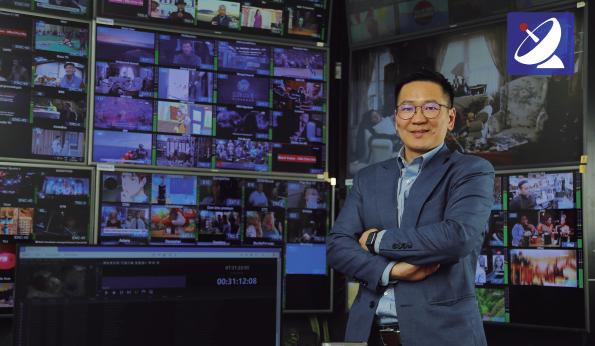
chosen solution, stating, “The solution selected by the Dish TV team for this project includes a dual Channel-in-a-Box server plus an additional CIAB license and a Multi-Backup Manager.”
He elaborates, “The system is configured to provide N:M redundancy. Dish TV’s operators are fully experienced in using our systems so were able to proceed without the additional training which we often provide.”
PlayBox Neo Channel-in-a-Box is a comprehensive playout server solution designed for broadcasting single or multiple television channels. Available in HD or UHD, it encompasses all the necessary tools for ingest, scheduling, text manipulation, interactive graphics, playout, and content distribution. Additionally, it includes remotely accessible tools to enhance preparation, quality control, and content monitoring. Output options include SDI or an IP stream.
Users range from terrestrial and satellite broadcasters to pay-TV service providers, playout centers, and satellite network operators.
The PlayBox Neo Multi-Backup Manager (MBM) enables a playout system administrator to allocate the number of backup systems, optimizing system costs while ensuring system integrity. MBM monitors user-defined lists with CIAB master and slave applications, automatically replacing a non-responsive master with a slave if necessary.
Dish TV provides direct-to-home satellite distribution of multiple television channels, movies, and content services throughout Mongolia. Established in 2008, it also offers services such as VOD and pay-per-view. The launch of the Koreasat 5A satellite in 2017 enabled viewers to receive a higher quality signal with a more compact dish antenna.
12 NEWS | STORIES OF SUCCESS
Red Bee Media and Who’s Watching TV partner to enhance World Poker Tour® broadcast services
In a groundbreaking move, Red Bee Media, a global media services provider, has forged a partnership with Who’s Watching TV (WWTV), aimed at bolstering services for the esteemed World Poker Tour® (WPT®). Known for its ubiquitous presence across land-based tournaments, television, online platforms, and mobile apps, WPT® stands as the epitome of internationally televised gaming and entertainment.
Under this strategic alliance, WPT® will leverage the WWTV Explorer Service, a program and schedule analysis tool, crafted to furnish comprehensive TV programming insights alongside vital metadata. This collaboration marks a significant milestone as it equips WPT® with access to an expansive repository of television content. As both companies state, by harnessing this treasure trove of data, WPT® is poised to not only optimize content but
also bolster ad sales revenue, all while fine-tuning strategic distribution channels.
Marcia Hernandez, Associate Director of Studios, Distribution, and Ad Sales, lauded the partnership, emphasizing how the WWTV Explorer Service empowers WPT® to navigate effortlessly through past and future listings across the entire North American region. “This platform allows us to search titles effortlessly. It’s user-friendly, fast, and provides research capabilities that are unmatched in the industry,” Hernandez remarked, underlining the game-changing potential of this collaboration.
Shaun Stark, Head of Red Bee Media Content Discovery, echoed Hernandez’s sentiment, highlighting WPT’s strategic foresight in embracing Red Bee Media’s enhanced television program information. Stark
emphasized how this decision underscores WPT’s unwavering commitment to delivering excellence in an ever-evolving media landscape.
“By harnessing the most accurate and comprehensive information available, WPT is positioned to stay ahead of the curve, offering exceptional experiences to their viewers,” Stark affirmed, signaling Red Bee Media’s dedication to empowering industry leaders with the tools needed for success.
According to both companies’ statement, this symbiotic relationship between Red Bee Media and WWTV underscores their shared commitment to empowering broadcasters with solutions that drive business success in today’s dynamic media ecosystem. Through this collaboration, both entities aim to foster mutual growth and advancement.
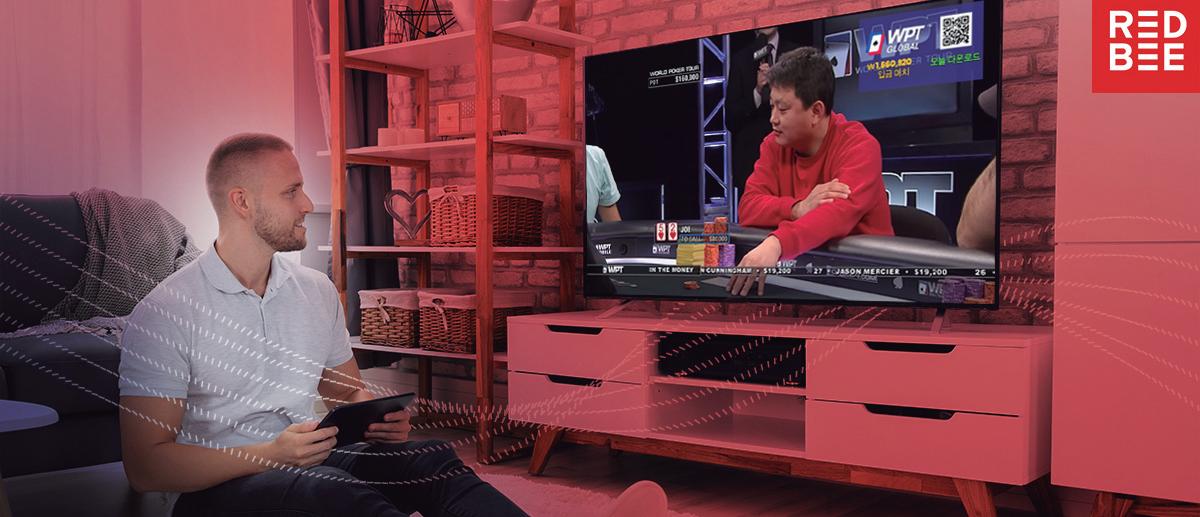
NEWS | STORIES OF SUCCESS
Swisscom enhances TV experience with Media Distillery’s AI-powered solutions

Swisscom has recently implemented Media Distillery’s AI-powered solutions to elevate its TV offerings. The deployment includes the Ad Break Distillery™ solution, aimed at powering Swisscom’s Replay Comfort adfree entertainment product, and the EPG Correction Distillery™, with the goal of enhancing the user experience across its blue TV channels.
The Ad Break Distillery™, an integral part of Media Distillery’s Time Marker Suite, utilizes AI and ML to analyze broadcasts in real-time, identifying program beginnings and endings, as well as ad breaks. This empowers Swisscom to deliver a seamless ad-free experience to Replay Comfort subscribers, even on channels where ad markers are not provided by broadcasters.
“We’ve observed signi fi cantly higher Net Promoter Scores (NPS) from our Replay Comfort subscribers, emphasizing the
value they place on the adfree experience,” remarks Philipp Wuethrich, Head of TV and Smart Products Backend Software Development at Swisscom. “Media Distillery’s technology ensures a consistent, high-quality adfree experience across all our customers’ favorite channels.”
The Ad Break Distillery™ automatically detects advertisement breaks in broadcast videos, irrespective of whether they occur mid-program or as interstitials, without requiring prior knowledge of individual ads. This enables Swisscom to offer uninterrupted entertainment to Replay Comfort subscribers, enhancing customer satisfaction and loyalty.
Swisscom’s commitment to customer-centric innovation is further demonstrated through the implementation of the EPG
Correction Distillery™. This solution ensures accurate EPG program schedule information, eliminating disruptions such as truncated programs or missed content during replay or catch-up viewing.
“We are delighted to partner with Swisscom in enhancing their TV user experience,” says Roland Sars, CEO of Media Distillery. “Swisscom’s dedication to innovation and customer satisfaction aligns perfectly with our mission to deliver cutting-edge solutions for optimized content consumption.”
According to the broadcaster’s declarations, with these solutions from Media Distillery, Swisscom continues to set industry standards in delivering high quality TV experiences to its 1.6 million households subscribing to blue TV services.
14 NEWS | STORIES OF SUCCESS
AD BREAK DISTILLERY™ INTEGRATED ON SWISSCOM’S PLATFORM
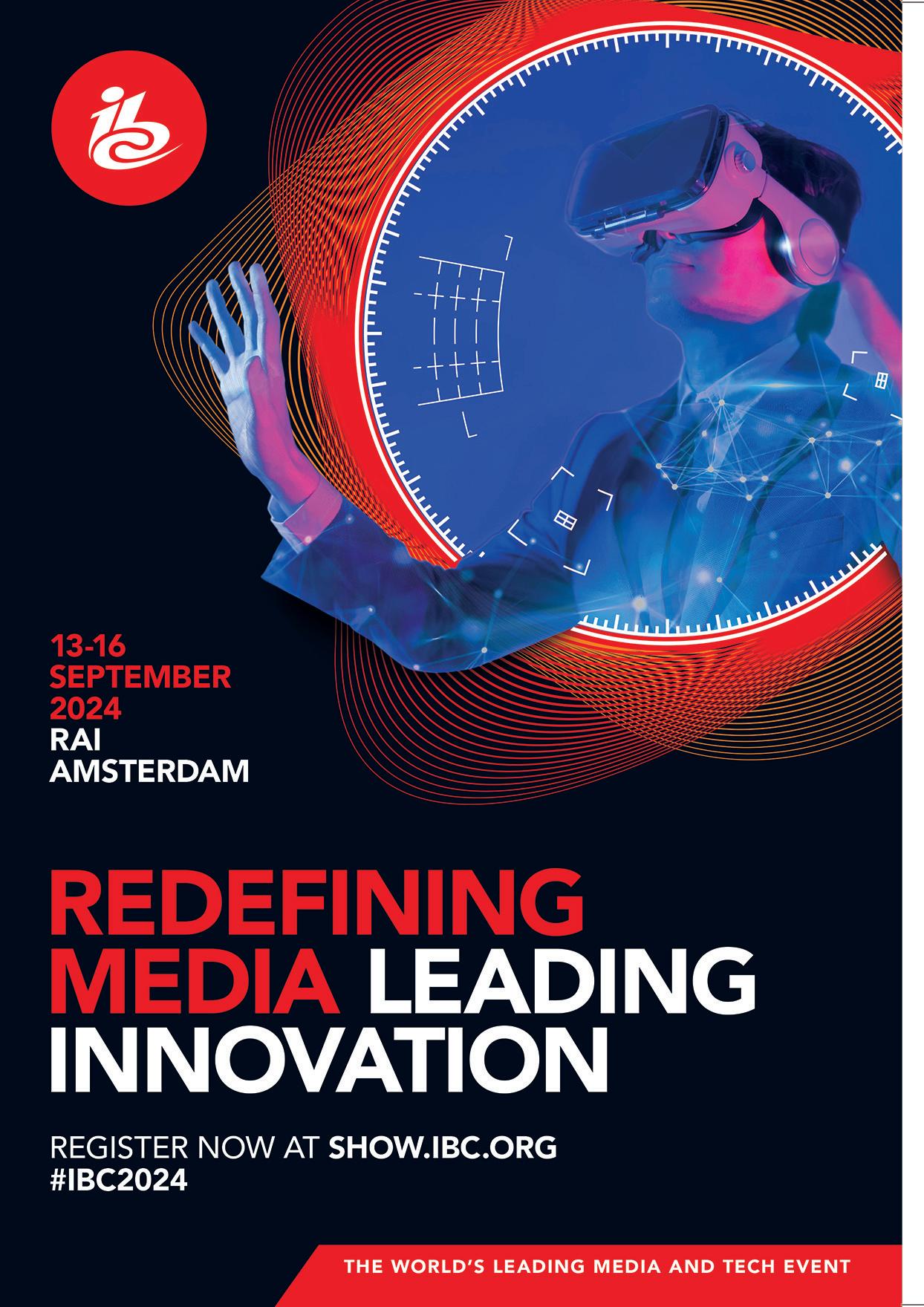
AI-powered editorial tool developed for RTL Deutschland’s NTV news channel

RTL Deutschland has announced the development of an AI editorial tool designed to support journalists at its news channel, NTV. Developed in collaboration with the German news agency dpa, this innovative project aims to streamline news gathering, writing, and publishing processes.
The AI tool, tailored specifically for NTV, assists journalists in various tasks such as prioritizing breaking news, suggesting topics, and drafting content in NTV’s language style. This customized approach ensures that the tool integrates seamlessly into NTV’s workflow, enhancing efficiency and productivity.
Initially, the newly developed tool will be deployed at the NTV news desk, where journalists will utilize it to work with reports from dpa. While the AI optimizes workflows and facilitates faster processing
of information, it’s important to note that all editorial decisions will remain under human supervision. Sonja Schwetje, Managing Director Programming at NTV and Editor-in-Chief of Business & Networks at RTL News, emphasizes the importance of maintaining human oversight in editorial processes.
Schwetje highlights the collaborative effort between RTL, dpa, and other partners to shape the future of journalism. She underscores the significance of combining exclusively researched reports with agency reports to enrich NTV’s news programming. The new editorial tool empowers journalists to analyze news accurately and efficiently, allowing them to focus on researching background information and crafting exclusive stories.
The development of the AI tool involved collaboration with various partners. RTL Deutschland’s AI Circle supervised the project, while ML6, a global tech company, developed the language model components. Ethinking, a long-standing partner of NTV, handled the integration into the digital newsroom. Additionally, the Google News Initiative provided support for the project.
Looking ahead, RTL Deutschland plans to expand the use of the AI tool across other brands within RTL News and Gruner + Jahr. The goal is to further enhance efficiency by reducing repetitive tasks and optimizing workflows. This initiative reflects RTL’s commitment to innovation and its dedication to delivering high-quality news content amidst evolving media landscapes.
16 NEWS | STORIES OF SUCCESS
EMG / Gravity Media has announced Charlie Cubbon as Chief Operating OFFICER & Jamie Hindhaugh as Regional CEO – The UK, USA, Australia, and Middle East
Charlie joins EMG / Gravity Media from Warner Bros. Discovery with over twenty years of extensive experience in building and revitalising businesses in entertainment (film, TV, games), sports, networks, e-commerce, consumer, and supply chain sectors.
During his time at Warner Bros Discovery, Charlie held a series of progressively responsible Vice President roles including VP – Head of UK Finance and Supply Chain, VP – Head of Commercial Development UK
& Ireland and most recently VP – Head of Strategic Planning and Operations UK & Ireland, showcasing his leadership, performance focus and commitment to excellence.
Jamie also brings a wealth of experience and expertise to his new role when he joins in July. With over 30 years of experience within the industry and a proven track record of being a dynamic and experienced Executive Leader, Jamie is well-positioned to lead EMG / Gravity Media’s operations within this region to
drive innovation, growth, and customer satisfaction.
Jamie has held numerous roles at BT Sport, The BBC, and Warner Bros Discovery. Jamie is currently the VP of Content and Host Broadcast at WBD, where as the incoming Head of BT Sport he was responsible for supporting the successful transition and launch of TNT Sports in July 2023. During his time at BT Sport he led the multiplatform channels business, responsible for the editorial, content and operational strategy and delivery.

NEWS | BUSINESS & PEOPLE
Dazn secures exclusive LaLiga broadcast rights extension for Italy and Portugal

DAZN has announced the extension of its exclusive broadcasting rights with LaLiga EA Sports in Italy and Portugal. This renewal ensures coverage of all matches from the Spanish competition until the end of the 2028/29 season. Since 2018, DAZN has been the international broadcaster of LALIGA in both Italy and Portugal.
In a significant move for football fans, DAZN has secured the extension of LALIGA broadcast rights until 2029, reaffirming its commitment to delivering top-tier football content across Europe. This agreement highlights the enduring popularity of LALIGA and solidifies DAZN’s position as the preferred partner for leagues and federations.
The extension of LALIGA broadcast rights underscores DAZN’s dedication to providing unparalleled sports experiences. With LALIGA renowned for its world-class talent, DAZN is thrilled to continue bringing
the excitement and drama of Spanish football to viewers in Italy and Portugal. Fans in both countries can anticipate live and on-demand coverage of 380 matches per season, including content from LALIGA HYPERMOTION and other highlights, news, and analysis.
Stefano Azzi, CEO of DAZN Italia, expressed pride in the extension, stating, “We are honored to continue as the exclusive broadcaster of LALIGA rights in Italy for another three years. Our longstanding collaboration with the top Spanish Football League solidifies our role as a key partner. Together, we aim to provide the best sports product to fans, delivering the spectacle of Spanish football in an increasingly interactive and exciting manner.”
Jorge Pavão de Sousa, Managing Director of DAZN Portugal, echoed this sentiment, saying, “We are proud to renew our agreement with LALIGA, one of
the most admired competitions in Portugal, for another five years. DAZN remains committed to offering the best of European Football, ensuring sports fans have access to a comprehensive range of competitions on a single platform.”
Javier Tebas, President of LALIGA, expressed satisfaction with the partnership, stating, “At LALIGA, we strive to collaborate with best-in-class partners to deliver Spanish football to fans worldwide. We are delighted to continue our partnership with DAZN in Italy and Portugal, two countries with rich football traditions.”
Melcior Soler, LALIGA’s Audiovisual Director, concluded, “After six years of successful collaboration in Italy and Portugal, and now in Spain as well, we are confident that fans will continue to enjoy the excitement and talent of LALIGA through DAZN.”
18
NEWS | BUSINESS & PEOPLE
GlobalM and scoopa forge strategic partnership to streamline content distribution
GlobalM has recently unveiled a strategic collaboration with scoopa, an expert in high-quality content distribution, aimed at streamlining the transmission of content and file exchange processes.
While GlobalM’s software-defined video network (SDVN) platform ensures the global distribution of live signals using SRT or RIST protocols, scoopa brings to the table an automated high-speed distribution platform tailored for file-based video content.
Through this newfound alliance, broadcast-quality live signals are seamlessly channeled from the GlobalM interface to scoopa, where they are then recorded as files ready for distribution, whether for broadcasting, editing, or archiving purposes.
This partnership promises significant time and cost benefits for producers and rights holders by eliminating intermediary steps like recording in OB vans or control rooms. Furthermore, the files become available as soon
as the live broadcast concludes. Additionally, several processes such as preview videos, rights management, and email notifications are automated, enhancing operational efficiency.
Commenting on the partnership, Paul Calleja, CEO of GlobalM, expressed enthusiasm, stating, “We are thrilled to collaborate with scoopa in pioneering disruptive solutions for the broadcast industry, leveraging the cloud’s potential to deliver practical functionalities.”

NEWS | BUSINESS & PEOPLE
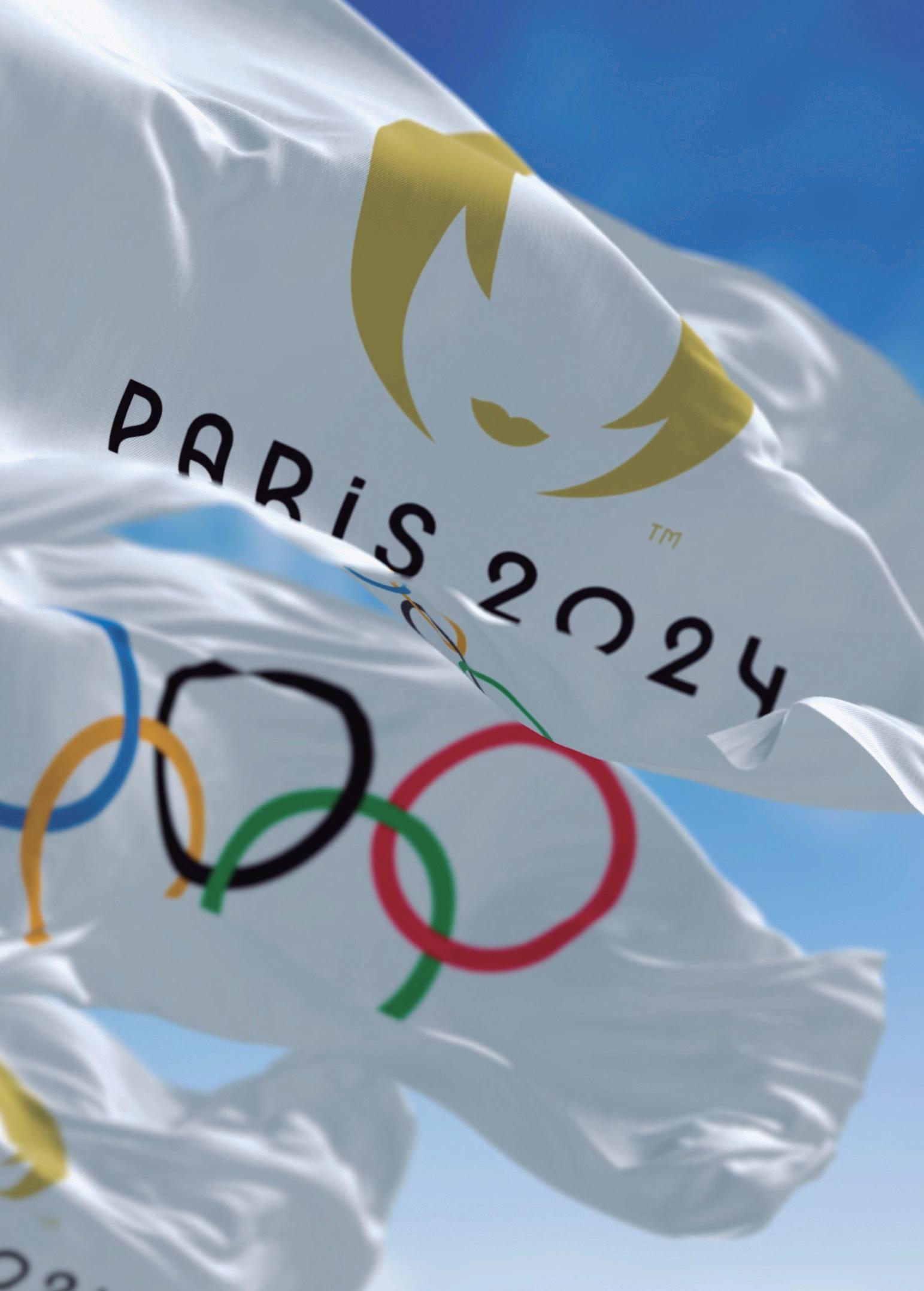
OBS, TV PRODUCTION OF THE OLYMPIC GAMES, PARIS 2024 OLYMPICS
By Luis Sanz, Audiovisual Consultant

The XXXIII Summer Olympic Games will begin on July 26 in the city of Paris. Undoubtedly, it will be the biggest global sporting event of these years, until the XXXIV Games are held in the city of Los Angeles in 2028. But, in addition, it will also be the largest TV event of the time, both in audience and in operational and technological production.
With this article we offer readers an understanding of three elements: first, what OBS (Olympic Broadcasting Services) is and what it does; second, how television production of the Olympic Games in general is carried out and; finally, how the production that OBS will undertake for the next Olympics in Paris will be carried out.
For this we are relying on the active participation of Isidoro Moreno Tirado, Head of Engineering and Technical Operations of OBS, who will update us on the three elements that we are going to cover here.

OBS, THE OLYMPIC BROADCASTING SERVICES COMPANY
TV production of the Olympic Games was historically carried out by a host broadcaster, usually the most important television organizations in the country in which the city chosen to host the Games was located. From a technological point of view, the fact that every four years -two if the winter games are taken into account- the producer of television coverage was different and from different countries, did not make it easy to make the most of the experience gained from previous Olympics

and, therefore, within the IOC -International Olympic Committee, responsible for the organization of all the Games -summer, winter, youth, and after an agreement with the International Paralympic Committee, also the Paralympics- began to consider the launch of a service company, directly reporting to the IOC, which would server as the host broadcaster in charge of television production of all the Olympic Games which would be responsible for their full coverage, drawing for each event from professionals at the broadcasters and offering them all the content they needed for their domestic broadcasts of the Games.
And so in 2001 OBS was born within the IOC, in
the form of a non-profit company, and in 2005 it established its headquarters in Madrid. In this way, OBS, with the same main team of professionals, would be able to benefit from the experience gained from each edition of the Olympics to improve performance, quality and efficiency of the following ones.
Specifically, and in accordance with its statements, OBS produces live television, radio and digital coverage for the Olympic and Paralympic Games. Its coverage is neutral, does not favor any particular country or athlete and includes the sports competitions, as well as the Opening and Closing Ceremonies.
22 SPORTS
ISIDORO MORENO, HEAD OF ENGINEERING OBS
In addition to producing the live coverage, OBS’ main responsibilities are:
Support, facilitate and improve the operations of the holders of broadcasting rights for the Games, providing them with facilities and services at the IBC (International Broadcasting Centre) and at the venues where the sports competitions are held.
Design, build and manage the International Broadcasting Centre (IBC), the headquarters of OBS and broadcast rights’ holders during the Games, while ensuring a proper provision of broadcasting services at the respective venues.
As the ‘narrator of the Games’, produce a wide range of additional
content (behind the scenes, interviews, highlights, feature reports, digital, data, etc.) and offer accessible and scalable content delivery solutions (support for remote operations and digital production).
Achieve greater efficiency in the workflows and solutions offered to broadcast rights’ holders.
The owner of the broadcasting rights for the Olympic Games worldwide is the IOC, which offers them to broadcasting companies through negotation of broadcasting rights agreements. OBS is responsible for supplying the international television and radio signals of the Games to all broadcasters holding the broadcasting rights.
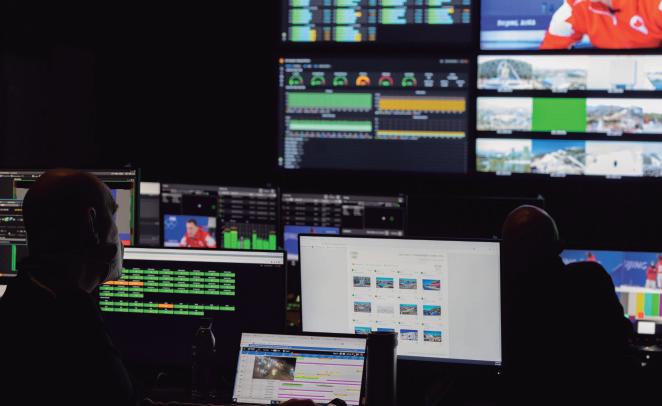
The central production of OBS is intended for an objective, multilateral coverage of all Olympic sports, generating international television and radio signals to be delivered to broadcast rights’ holders, who can carry out their own unilateral coverage with production of their own images, interviews, data, analysis and comments that complement the global signal supplied to them.
OBS, through an international broadcasr network, provides broadcast rights holders with unilateral capacity in the Multichannel Distribution Service through multiple satellites on the one hand, and unilateral LiveCloud links from the IBC and from the venues, through the Cloud and even the public Internet on the other, in a secure and reliable way.
OBS produces live television, radio and digital coverage for the Olympic and Paralympic Games. Its coverage is neutral, does not favor any particular country or athlete.
23 PARIS 2024
© OBS – SILVIO AVILA
The services that OBS provides to broadcasters holding broadcasting rights are:
At the IBC
Work areas.
Centralized technical area, centralized space for broadcasters’ equipment.
Internet access.
Infrastructure conditioning spaces, including satellite antennae.
Commentary facilities for events at venues that do not have them on-site.
At the venues
Camera positions.
Presentation points at the venues.
Positions for occasional presentations.
Interview points in general.
Positions for social media.
Buildings and temporary infrastructures.
Commentator systems and positions.
Mixed area for athlete interviews.
Energy, wiring, lighting and Internet access.
Connectivity within the venue.
Between Venues, External Studios and the IBC
Video, audio and data circuits.
Audio and video file transfer.
5G/4G bonding for transmissions over cellular networks.
OBS has a core of 165 full-time employees from 28 countries, with a management team that has an average experience of working in 12 Olympic Games.
TV PRODUCTION OF THE OLYMPIC GAMES
The process begins when the International Olympic Committee convenes a session in which by secret ballot the winning city from among the candidates is
finally selected. The process involves the submission of nominations, ongoing dialogue, project analysis and, finally, the election of the venue by the IOC. A big responsibility for the selected city or region!
There are many elements that are taken into consideration for the election of a candidate city, being very important aspects sustainability and legacy, environmental impact, people’s support, etc.
The election is normally held seven years before the event, but there are exceptions as was the case with the election of Paris 2024 and Los Angeles 2028 simultaneously.
Committees and Initial Plans
The chosen city sets up a local organizing committee that approaches OBS with a proposal for coverage of the Games, more refined than that included in the bid and that has to be in accordance with the Olympic Charter, a set of Olympic principles
24 SPORTS

OBS has a core of 165 full-time employees from 28 countries, with a management team that has an average experience of working in 12 Olympic Games.
that are, among others, driving and supporting the advancement of ethics and good governance in sport, as well as educating the youth through sport, non-discrimination, solidarity and sustainable development. This proposal includes the sports to be covered, the desired venues, what services they need for inclusion in the IBC (International Broadcasting Center), International Radio Television Center, etc. Sustainability is a key element, an attempt is
made to reuse existing venues, temporary venues associated with an economic analysis to minimize the impacts, but at the same time enhance the areas of greatest interest to the city.
The local committee presents a competition plan including the sports proposed for the Games, which may slighly differ from those contemplated in the bid.. This plan is refined in the first meeting with the OBS. In addition, other types of events
are discussed, as it is for example the case with Paris, a city that will promote a popular marathon with the participation of more than 40,000 runners, and we make a special coverage plan for its promotion and dissemination. Paris has also changed the opening ceremony of the Games, which was initially intended to be held at the Stade de France and it was decided in the end that it will take place at the River Seine, an opening ceremony open to the city in a place where many people can attend.
25
6G
© OBS – SILVIO AVILA
The aim of the Olympic Games is to pay a tribute to the athletes, but at the same time they are also intended for promoting the host city. This kind of change occurs during this planning period, as it has been in the case with Los Angeles 2028, where we have had several changes for the proposed location of the IBC, up to four times.
The planning of the Games is based on the Master Plan, in which the critical action plans and their specific dates for implementation are defined for the delivery of the IBC building, the supply of energy, the fine-tuning of the air conditioning, etc. From a certain moment on, there are no options for modification in regard to each specific action plan. The local committee has to bring the building to a good condition by means of previous works that they are meant to manage: electrical connection, telecommunications, air conditioning, fire extinguishing, etc.
Next, they deliver the building to OBS -in the case of Paris eight months
before the Games- and at that time we start with the implementation of action plans, the “fit out”, that is, we begin to install the general construction equipment, with paneling of spaces for the location of the broadcasters, fitting of doors, windows, carpets, etc. Once the building has been made available, OBS takes care of everything happening inside.
A local committee not having enough experience in television coverage may propose extremely expensive things that offer little benefit, and OBS can offer solutions that, being also valid, can lower the budget, although they may be less comfortable for us. Despite this, in the case of Paris, the local committee has decided to hold the surf competition on a beach in Tahiti, in the French Polynesia, more than 15,000 km away from Paris, with the resulting difficulty of its coverage and its associated high cost.
OBS, in coordination with the local committee, begins to carry out the initial location visits to the
venues to get to know them and assess their features, basically evaluate the best positions for the placement of cameras in order to have the best possible coverage and see how wiring them can be best achieved. The venues proposed in the bid can be visited, but, it may be the case that now, years later, there are changes to be venues for a certain sport by thoroughly studying the location and seeing that another location may be a better option based on difficulty and cost.
Teams
At OBS we have five production teams and five engineering teams. Each of them take charge of a certain number of venues, according to their specialization. A producer and an engineer who almost always do the same sports go together. This makes them more efficient, as they have a very deep knowledge of the relevant sporting activity. In each venue the particular sport to be covered is analyzed and determination is mae in regard to all the
26 SPORTS
additional services that must be provided to broadcasters, planning for mixed areas for interviews with athletes and where the “compounds” (dedicated enclosures) for mobile units or production equipment or catering will be placed.
Absolutely everything is coordinated. OBS has work teams for the “games services”, that is, services related to logistics, access, transport, catering, accommodation of the personnel who will work at that venue. The engineering team determines the camera placement platforms, the paths for wiring with the mobile unit, the latter’s swivel range, safety, in sum, everything perfectly coordinated. It’s a day-to-day job with the local committee. Sometimes the committee gradually discovers things that, perhaps, had not been considered and have to be resolved.
Regarding the needs of the staff, in OBS the main “core business” of all professionals who carry out the planning of the coverage for all the Games
is limited to 165 people, all of them located in the Madrid headquarters: production, engineering, finance, admin, etc. For Summer Olympics, in the process of executing a global project for television coverage of the Games and their development, this set grows to more than 8,500 people. At OBS we have a large Human Resources database that allows us to find freelancers for different tasks. Most of the OBS permanent staff, the abovementioned 165 people, will be physically at the Games, but another part, less linked to execution, such as finance, human resources, etc., work remotely from Madrid.
Services
Nowadays, it is more practical to provide local services, although a broadcaster who does not travel to the host city is always given a remote signal. The need is stronger for on-premises services, but the service is provided remotely when necessary. If there is a broadcaster that is going to do athletics
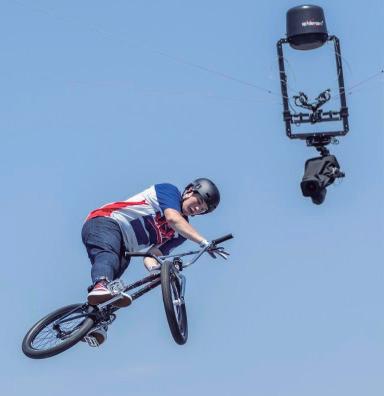
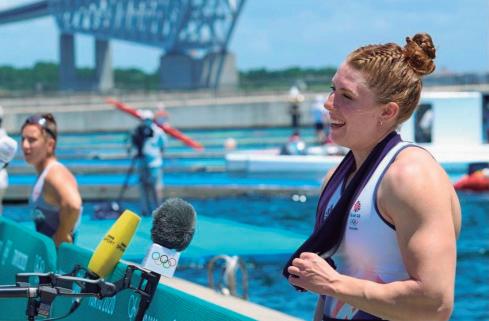

Nowadays, it is more practical to provide local services, although a broadcaster who does not travel to the host city is always given a remote signal
27 PARIS 2024
© OWEN HAMMOND. OBS
© OWEN HAMMOND. OBS
© OBS – SILVIO AVILA
coverage at the Stade de France, OBS cannot tell them that the signal produced will be sent to Madrid and from there to that broadcaster. He will say that he is already in Paris. On the other hand, international lines are not cheap and it is better to do it locally. It is very different to cover Summer or Winter Games, than doing so in Youth Games, when broadcasters do not travel in many cases to do the local operation but expect OBS to send them the signals with which they will carry out their coverage. There is a very clear transition from previous Games in which due to technological limitations, the IBC was an almost unique space, very suitable for broadcasters to do their television operations, to current times, where the operation can be distributed. For example, in Paris there are broadcasters who do studios outside the IBC, in the heart of the city. If you plan a studio in Trocadero, you can have the Eiffel Tower in the background, with people walking
around, thus resulting a very olympic atmosphere. Many broadcasters want to do outdoor sets whenever they can. The requirements for studios at the IBC are lower than outdoors and athletes can be grabbed for interviews with images embedded in a colored background.
These situations that are different in each case, have to be discussed and clarified with broadcasters. In Paris, OBS offers 20 sets outside the IBC in two locations: Trocadero and “Stade de France”. There are times when broadcasters or National Olympic Committees look for what they call “the house of “, the house of Switzerland, the house of Canada, etc. They are somewhat iconic places, where a mini-set is erected for interviews, getting a more accessible external operation.
Planning
The production and engineering teams go to each venue and plan the production, setting up the necessary technical
infrastructure to cover the events with the layout and placement of cameras and microphones. In parallel and independently, the schedule for the competition is discussed, which the sports federations have previously agreed with the local committee and, based on it, OBS creates the schedule for broadcasts, so that all the necessary signals are distributed though the 47 channels foreseen. Competition schedules are adjusted to help broadcasters have the broadest possible audience in sports of their choice depending on their relevant geographical area. Sometimes this is very complicated, because there are sports that are very popular worldwide and there are others that are restricted to specifi c locations or regions of the globe. The calendar with its schedules is a very important element. The production plan even includes the placement of the cameras for the coverage of each event.
28 SPORTS
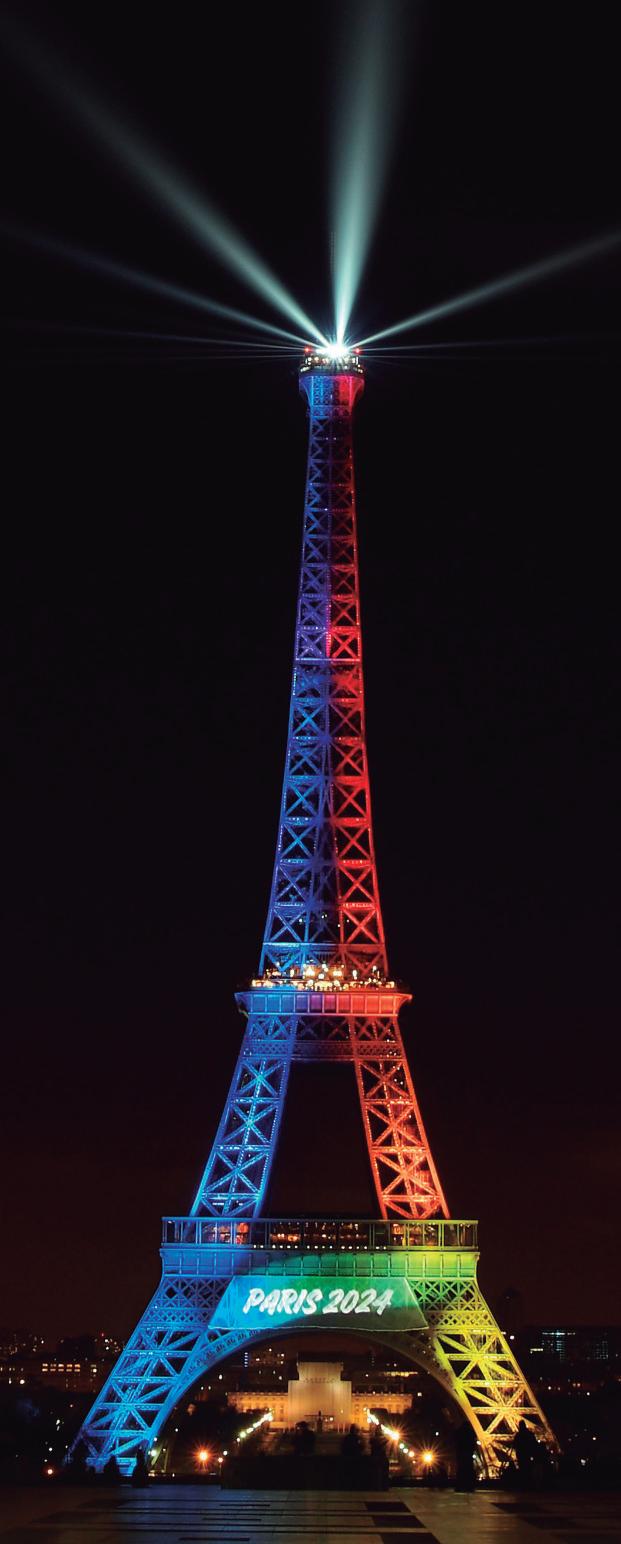
It is intended that the outcome of the sport’s broadcast has at least the level of television coverage that is offered for the world championship of the relevant sport. In many cases, we manage to offer more coverage in a sport than the relevant World Cup, as for example in table tennis. The reason for this position is because OBS has means, knowledge and interest and therefore a more complete coverage is made. However, there are sports such as football that, because of their very essence as a unique event in their world championship, offer more services than the OBS, like allocating an individual camera per player, offering many more replays, etc. OBS does not reach that level, but this happens in very few sports. The problem lies in the difficulty for OBS to cover 33 sports and 40 disciplines for Summer Games, and each stadium requires a different production plan. A football world cup is held in many venues, but the production plan is very similar for all and the coverage prepared for one of them can be replicated for the others. In the Olympic Games it is not the same to cover a football match or a surf competition or climbing or a breakdance event. Each sport has its own idiosyncrasy.
29 PARIS 2024
The production and engineering teams go to each venue and plan the production, setting up the necessary technical infrastructure to cover the events with the layout and placement of cameras and microphones
Having proposed the production plan and with four years for developing and concluding it, OBS has a first briefing meeting with all broadcasters who have broadcasting rights, the so-called “world broadcasting briefing”, in which the production plan is presented to them. Later on, unilateral meetings are offered with all broadcasters.
On the production plan, broadcasters give their opinions and raise their statement of intent to cover the event, which are included in the plan. Next, a “world broadcasting meeting” is held in which OBS presents the broadcasters with the directory of services that we propose, and the broadcasters can propose some more, which are discussed and included, where appropriate. The calendar of events is also presented, and then the development plan for the coverage of the event begins.
Coverage
OBS’s 165 permanent staff cover many events simultaneously. Work is underway for the Paris Games (2024), the MilanCortina D’Ampezzo Winter Games (2026) and the Los Angeles Games (2028). This multiple and cross-sectional work ensures consistency in the way of covering events and the knowledge of which services are useful and recommended, because they have already been tested in other Games and the level of interest they raise is already known. It is not interesting to propose services that are expensive and that are known to be requested only by a few broadcasters. On the contrary, there are services that are in high demand such as satellite distribution of the entire production of the Games. Most broadcasters make an intensive use of this service, because it is very
interesting to have channels already fully produced by OBS and use them in their own broadcast channel, maybe requiring the work, at most, of translating them into their local language, if the audience are not English speakers. They are also interested in satellite distribution as a backup, in order to have an alternative broadcast if the optical fiber linking them is interrupted or they experience any other issue.
There are services that have a wide spectrum of users. In Paris we are going to distribute 47 different channels simultaneously. On a peak day, you can have 38 simultaneous sports, plus the images of the panoramic cameras of landmark areas of the city, which are used in production for transitions between events. For satellite distribution, sending 47 signals in UHD is unfeasible from a financial point of view. Therefore, it has been decided to rearrange the content of the 47 channels and reduce them to 16, which, together with the news channel -the Olympic
30 SPORTS
Channel News (OCN), which includes only recorded content- make the 17 channels that are sent by satellite in HD format.
With 16 signals we have the problem that certain sports cannot be broadcast live, since more than 16 are held simultaneously. Therefore, OBS discusses with broadcasters so they choose 16 “premium” events to broadcast them live as a priority. Whenever there are more sports taking place live than the 16 premium sports, the rest is shifted along time and when one of the 16 chosen ends, another sport is broadcast on that channel with some overlapping time (as it started before the premium sport ended) or is set to be broadcast in full afterwards if there is no overlap. This ensures that all finals and semi-finals of all sports are broadcast live.
Promotion
In Paris we are going to distribute 47 different channels simultaneously
Prior to the start of the Games, OBS produces a lot of promotional content. “Technical features” pieces are made, which are videos explaining the technical features and dynamics of each sport. More sports are added in each edition of the Games. For example, in Paris will se breakdance for the first time as will be cricket in Los Angeles. Videos explaining the dynamics and characteristics of these sports must be made so that viewers will be able to understand them. And it OBS understands the sport well, it’s much easier to get good coverage and engage audiences. These promotional videos are produced by OBS, but external companies are hired for the execution of the works. More than 1,000 videos are produced and OBS has platforms where these promotional contents are available for broadcasters to use on their own channels.
In a new sport, the first thing OBS producers do is understand it and study it.
It is imperative to do so in order to plan for adequate coverage. The technical means and the professionals who will use them in production, video and audio technicians, camera operators, filmmakers, etc., are outsourced from external companies and are sought among the thousands of people who are already in our HR database, in locations where the specific sport is important or has been broadcast for a long time.
We make aerial recordings of all the stadiums and how their fi t-out is progressing. In addition to the promotional videos produced by OBS, there are others produced by our suppliers and we have to check that they are compatible with our UHD format. For example, a top sponsor is OMEGA, which produces augmented reality in many sports in Paris, runs simulations, 3D analysis, etc. as well as promotional videos to contribute to the understanding of the sport being analyzed.
31 PARIS 2024
Formats
In the Olympic Games, OBS makes the coverage with a comprehensive vision of each sport, there are no privileges, all the athletes in a given sport are covered by our cameras, it is our commitment with the olympic movement. Therefore, many times we have to change the coverage format that the companies we hire for the production of the events usually make. For example, at the Rio de Janeiro Games we reached an agreement with the North American broadcaster NBC for the production of golf, a sport that was added to those Games, because they had a lot of experience, but their type of coverage was limited to following the players who were in the lead and disregard the others, so the means they used were a few cameras and a few replays. OBS had to cover all the players, so we needed dozens of cameras and dozens of replays and that’s what was finally done. Every time a new sport joins in, producers have to make an
effort to study it thoroughly and thus be able to give coverage in the format that we need.
And there are more needs to cater to. Nowadays, all sports have “video refereeing”, like VAR in football. The judges in a sport need to have videos to analyse the results, assess who wins, whether a record is valid or not, etc. Judges have their own video and replay systems for analysing the development of the sport. Each sports federation discusses with the IOC -International Olympic Committeethe means they need and OBS helps them with additional means. We use 1,000 cameras and in “video refereeing” we are asked to provide images from 600 of them. OBS gives them copies of those cameras to help them in their work.
And here comes Paris
The commissioning works for the IBC in Paris began last January, after due coordination with the local committee that has made the building available to us and provided the
electricity supply that we have requested . For the broadcasters’ facilities, each broadcaster designs its own space in the IBC and OBS has agreed with it the plans for installation as a result of the supervision job we have carried out, so that the local regulations on safety, fire, working and risk conditions, etc. will be complied with. We have engaged a company for the construction of the spaces within the IBC, according to our instructions. They are working with about 150 professionals.
The OBS engineering works in Paris began last March at the IBC facilities, starting with the pre-wiring. For the other venues, the work begins later, as their size is smaller than the IBC (40,000 square meters of usable space). In May, OBS will send the bulk of the headquarters engineering department to finish the works.
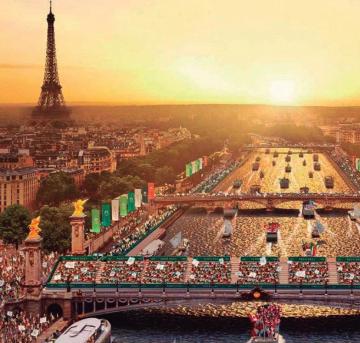
32 SPORTS
© PARIS 2024
Broadcasters are already starting to head off to Paris. Some, North Americans, Japanese, Canadians, etc. have important infrastructures that take a long time to have ready. French televisions will also appear soon, which also entails a lot of infrastructure as they want to cover the Games with high quality.
THE XXXIII OLYMPIC GAMES PARIS 2024
The TV production that OBS is going to make at the Olympic Games in Paris features the following elements:
Deliver more content than ever before, including more athlete-focused coverage, behind-the-scenes material, interviews with coaches and athletes, pre-competition and post-competition content.
Adopt a cinematic approach in the coverage of broadcasts, using for the first time cameras
with cinematic lenses that provide a shallower depth of field.
Capture the urban atmosphere of Paris, with the most iconic places and monuments of the French capital as a backdrop for the broadcast.
Offer complete coverage for all platforms and all ways of consuming audiovisual and communication media.
Use technology to the benefit of storytelling, with access to more data and more immersive solutions. At the Youth Games, teen athletes have been interviewed who, perhaps, will become medalists in the future. This way, we have data to write their story from the beginning.
Greater drive to achieve gender-balanced coverage between men and women.
The IBC (International Broadcasting Centre), the headquarters of the broadcasting operations, is located in halls 2B, 3, 4 and 5 of the Le Bourget
Exhibition Centre in Paris and will be operational 24/7 on 26 June next.
PREPARATORY ACTIONS
Back in July 2023 OBS participated in the operational test of the Opening Ceremony on the River Seine that will be hosted by Paris 2024. New technologies and camera systems have been developed to bring the creative team’s vision of the Paris 2024 Opening Ceremony to life.
OBS captured pre-Games content, including aerial and landmark images of Paris. These images have been made available to broadcasters holding broadcasting rights for use in their promotional programming.
OBS has identified partner universities and schools for the Broadcasting Training Program (BTP). The training workshops took place last fall. OBS will hire more than 1,300 BTP students for full-time paid positions.
33 PARIS 2024
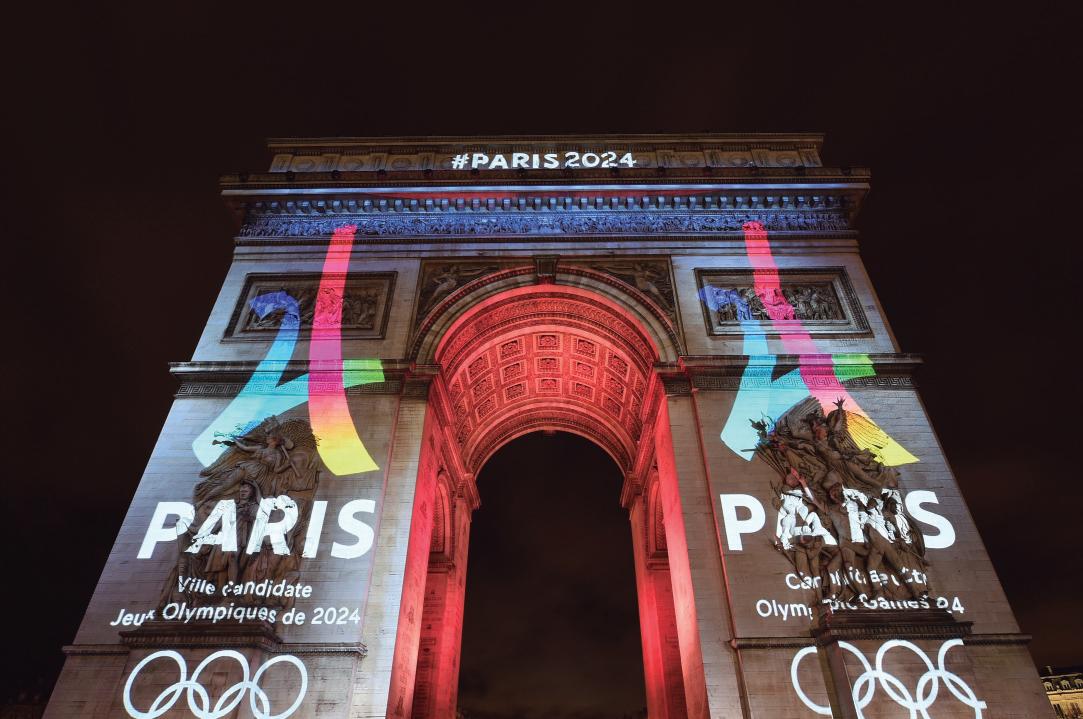
In collaboration with Paris 2024 and the French authorities, OBS has developed an interim production plan for the air coverage of the Games.
12 panoramic cameras have been confirmed, located and chosen to highlight the most iconic images of Paris.
REDUCTION OF THE BROADCAST FOOTPRINT
Numerous initiatives have been developed to streamline the smooth running of the Games and achieve an overall reduction
in the broadcasting footprint at both the IBC and the venues. New technologies, such as OBS Cloud, enable OBS to do “more with less”, this resulting in a significant reduction in physical space and energy needs.
As a result, Paris 2024 saves space and infrastructure, and certain venue optimization processes will create additional opportunities for ticket sales.
The adoption of new workflows, as well as the introduction of more options for remote production has also
New technologies, such as OBS Cloud, enable OBS to do “more with less”, this resulting in a significant reduction in physical space and energy needs helped broadcasters save resources and manpower. However, these optimizations do not imply any type of reduction in the quality of OBS coverage or in services provided to broadcasters. OBS’ commitment remains to constantly improve the quality of the broadcast in each succeeding Games.
34
INNOVATIONS IN THE OLYMPIC GAMES PARIS 2024
The guiding principles of OBS coverage are:
Improve the quality of OBS production and the service level to broadcasters.
Use technology for the benefit of storytelling with more athlete-centric coverage and immersive solutions.
Make content more accessible and scalable (to support remote operations and digital production).
Increase the efficiency of OBS workflows and tools, enabling to do more with less, in a more intelligent cost-effective way.
Technological
advances in OBS coverage
UHD HDR + 5.4.1 immersive sound: The Games will be produced in fully native Ultra High Definition (UHD), combined with High
Dynamic Range (HDR), which results in a resolution that provides four times more detail than Full HD, and also 5.4.1 immersive sound.
Cinematographic lenses: Will be used for the first time in all sports.
360º multi-camera replay systems: More than twice as many systems for frozen slow-motion replays as compared to Tokyo 2020.
Testing of a newly developed virtual mobile unit, whose proof of concept was carried out in earlier this year in January at the Gangwon Youth Games in South Korea. The aim is to replace the use of large traditional mobile units by the use of standard hardware equipment connected to software applications of different companies in the cloud obtained from “edge” servers, using it during the production of the Games. Paris 2024 will be the
crucial test for this new virtual mobile unit concept that, without a doubt, has a lot of future ahead.
Athlete’s Moment:
Building on the success of Tokyo/Beijing, the athlete’s moment will be present in more sports than ever before in Paris, allowing more athletes to connect with their family and friends remotely, immediately after leaving the arena.
Dynamic Graphics: More live data for narrators. At the studio, more than 10 sports with new “effects” as compared to Tokyo 2020 (positioning data, performance metrics, etc.).
Multi-clip Channel: More sports with a dedicated multi-clip channel, offering broadcasters more content, with additional ultra-high-speed slowmotion replays, other special camera and behindthe-scenes shots (i.e. athlete arrivals, warm-ups, venue atmosphere, etc.).
35 PARIS 2024
Drones and Cable Cameras: An unprecedented number of drones for live coverage and more four-point systems than in any previous edition of the Games.
Widespread use of IP transport at headquarters and IBC. Delivery of direct content to broadcasters will be offered, in addition to 12G, the bandwidth required for UHD, over IP SMPTE ST 2110.
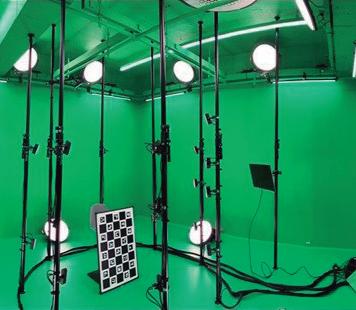
Implementation of private 5G networks: Used for onboard pointof-view (POV) cameras in navigation and during the opening ceremony. Other cameras equipped with 5G may be used for live coverage of other sports.
Content+: Cloud-based portal offering all content produced by OBS, with live sessions and a wide
range of short-form content, including behind-the-scenes and social media content.

8K Coverage: OBS and NHK will collaborate to produce live 8K coverage for the Opening Ceremony, 3x3 Basketball, Breaking and Skateboarding Park.
Provision of a Virtual Studio in the Olympic Village for remote interviews and virtual studio backgrounds.
Augmented Reality (AR): Content and interviews from the Athletes’
© OBS – SILVIO AVILA
Village, designed for mobile phones, but also usable with AR and VR headsets. Live interviews from the Village directly to the studio of a broadcaster can be made, with the ability to choose among different levels of complexity for integration with the studio the relevant national production center.
OBS LiveCloud: Delivery of the live signals through the cloud (for the first time in the broadcasting of the Olympics will be the main distribution method. Cloud distribution facilitates and monetizes access to content; it has the capability to expand or shrink as necessary to meet demand and offers more flexibility, thus allowing to select between different standards (HD or UHD delivery).

36 SPORTS
The obligation that OBS has to provide audio and video signals in the format required by each of the broadcasters, requires the application of a “down conversion” of quality from the single production format -UHD- to HD format, and even SD. Audio is produced in 5.4.1, but stereo mixing is also generated.
Technologies based on Artificial Intelligence (AI)
OBS has already been using AI in its internal content workflows, on issues such as automatic cropping
and English-language mixed-zone interview transcription.
More AI-based applications to our workflows are planned for Paris 2024, including subtitle files for live sessions and automation of highlights for vertical formats.
In order to meet the needs of broadcasters who want to have particular content related to their national athletes, OBS works on automatic generation processes for clips, trained by machine learning, according to the specific requests received. These processes are always supervised by OBS producers.

TRAINING THE NEXT GENERATION OF BROADCASTING PROFESSIONALS
As an important part of the OBS legacy for each edition of the Games, the Broadcasting Training Program offers undergraduate and graduate students from local universities an unparalleled broadcasting experience.
Under the guidance of OBS broadcasting experts, students receive numerous training opportunities in addition to practical knowledge and valuable work experience during the Olympic Games. In this way, graduates acquire a diverse knowledge needed to venture into the broadcasting industry.
For Paris 2024, OBS plans to hire more than 1,300 BTP students for a number of paid positions.
37 PARIS 2024
GENDER EQUALITY, IMPROVING OPPORTUNITIES
For Paris 2024, OBS will hire more women for key operational positions in broadcasting and plans to include some 30 female commentators (up 50% as compared to Tokyo 2020 and up 200% as compared to Rio 2016).
OBS will increase the number of women in the production teams located at the headquarters, especially in roles that generate the images, which we believe will lead to a more balanced representation.
Two-thirds of management positions at the OBS headquarters will be held by women (compared to 50/50 in Tokyo).
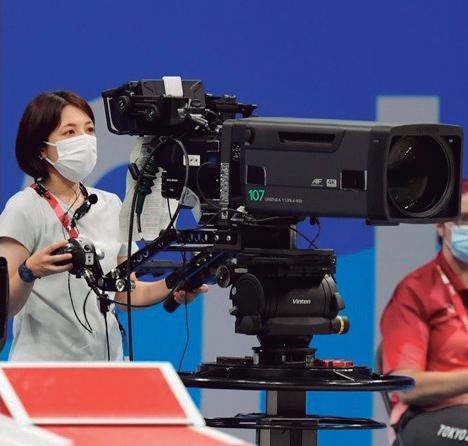
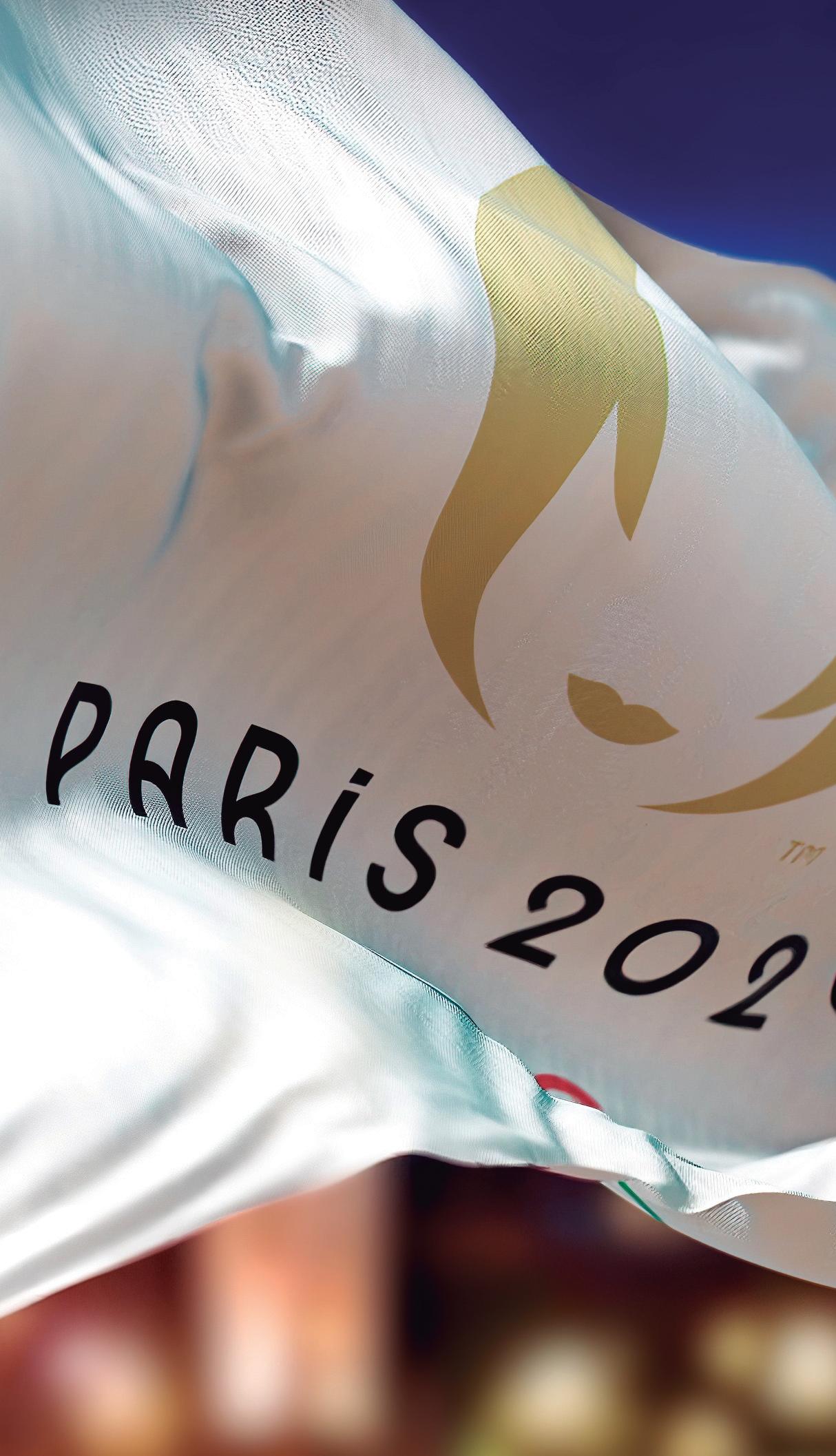
38 SPORTS
© OWEN HAMMOND. OBS

THE COVERAGE OF THE OLYMPIC GAMES PARIS 2024 IN FIGURES
More than 11,000 hours of content produced by OBS.
Of these, 3,800-4,000 hours will be devoted to sports competitions and ceremonies.
Over 2,350 hours of multi-clip sources.
72 sources of multilateral contribution in UHD.
28 multi-clip sources.
82 HD distribution sources.
About 3,300 UHD and HD sources processed and distributed within the IBC.
48 stereo audio sources for radio.
47 production units.
70 production galleries.
More than 1,000 camera systems.
More than 20 multi-camera replay systems.
12 beauty cameras throughout Paris.
More than 3,600 microphones.
40,000 m2 usable in the IBC.
36 enclosures for broadcasters in the venues.
100 Gbps internet capacity.
More than 4.2 Tbps reserved for the international telecommunications network.
29 broadcasters holding broadcasting rights.
More than 80 broadcasting organizations.
165 permanent employees in OBS from 28 different countries.
More than 8,300 temporary employees at the Games, from more than 110 countries.
More than 1,800 training positions for local students within the OBS training program.
More than 1,300 paid positions for trained students.
39 PARIS 2024

Unveiling the future How 6G will transform broadcasting
A conversation
with Alexander Lawrence, Editor in Chief of ‘6G World’
In the world of telecommunications, 6G is emerging as a signal fire of future possibilities, promising to revolutionize not only how we connect, but also how content is consumed globally. In our conversation with Alexander Lawrence, the insightful editor of 6GWorld, we explore the profound impact that this new technology could have on the broadcast and audiovisual industries. With a deep understanding of technology shifts and their broader implications, Lawrence provides a fascinating glimpse into a future where 6G technology breaks down traditional barriers in content production, distribution and consumption.

As we stand on the cusp of this new technological era, Lawrence makes it clear that 6G will enable more immersive media experiences. It will integrate augmented and virtual reality in ways that were previously constrained by bandwidth limitations.
This next-generation technology will allow broadcasters to deliver richer, more interactive content. It will enable experiences like virtual reality broadcasts and augmented reality overlays that will transform viewer engagement.
Furthermore, Lawrence is clear that stakeholders in the broadcasting industry must begin preparations for the 6G rollout now. From adapting to more advanced network infrastructures to embracing the convergence of digital and physical spaces, the steps taken today will pave the way for a smooth transition to 6G. This comprehensive preparation must involve technological upgrades but also a strategic rethinking of content delivery and audience interaction in a hyper-connected world.
Can you explain the core mission of 6GWorld and how it plans to influence the development and adoption of 6G technology globally?
6GWorld is an integrated platform dedicated to bridging the transition from 5G to 6G within the telecom and communications industries. Our focus extends beyond the mere technological evolution; we’re deeply invested in shaping how these advancements unfold commercially and socially. We aim to ensure that the next generation of
technology is not only innovative but also beneficial and accessible to society and consumers alike.
One of the core aspects of our mission involves addressing historical challenges in the industry. Traditionally, there has been a tendency to view telecommunications through a somewhat narrow lens—focusing primarily on technological standards without equal consideration for commercial viability or societal impact. This approach is something we actively work against.
For instance, as 3GPP kicks off its explorations into 6G this year, there’s a potential risk that the broader industry might fall into a passive mode, waiting on the sidelines until standards are established. At 6GWorld, we believe it’s crucial to concurrently consider how these emerging technologies can be transformed into valuable services, what regulatory measures are needed to support widespread adoption, and how to ensure these innovations reach all segments of the population. This proactive

TECHNOLOGY
stance is essential to driving meaningful progress in the telecom sector.
So with 6G still in the research and the development phase what are the most promising futures of 6G that you believe will revolutionize or break the ground into communications?
At this early stage, 6G is surrounded by a multitude of ideas and possibilities. However, one of the most transformative concepts is the integration of various communication forms that have traditionally

operated in silos—such as cellular, fi xed networks, Wi-Fi, and satellite. The promise of 6G lies in its ability to seamlessly blend these technologies into a cohesive system. This convergence could introduce new technologies and use existing ones in novel ways to create a more uni fi ed and e ffi cient network.
What makes this vision particularly compelling is the potential impact on the user experience. Imagine a world where the complexities of network
types become transparent to users. You wouldn’t necessarily need a new device to tap into the bene fi ts of 6G; instead, everything would work together to deliver services seamlessly, regardless of your location. This simplicity and ease of use are what we aim for with 6G, as it promises not just to evolve our technical capabilities but to fundamentally simplify and enhance how we connect and communicate. This, I believe, could be truly revolutionary for the fi eld of communications.
One of the most transformative concepts is the integration of various communication forms that have traditionally operated in silos—such as cellular, fixed networks, Wi-Fi, and satellite. The promise of 6G lies in its ability to seamlessly blend these technologies into a cohesive system.
43 6G

The embracing of AI into the communications is becoming increasingly important. How do you foresee AI playing a role in the development and deployment of 6G networks?
There’s a variety of methods. The integration of AI into communications is not just important—it’s becoming indispensable. Researchers are exploring several exciting ways to leverage AI to streamline and enhance the functionality of telecom networks. One of the most promising applications of AI in 6G is its potential to operate quietly yet efficiently in the background, automating many aspects of network management. For instance, AI could optimize how networks communicate with devices, enhancing efficiency and service quality.
AI could also play a critical role in energy management by intelligently controlling when to deactivate certain cell sites to conserve energy without disrupting service. This capability will
be increasingly important as we move towards more sustainable technologies.
Furthermore, AI can facilitate unprecedented collaboration between different service providers. Imagine being at a crowded event and trying to upload a high-definition video. Your mobile device, through AI, could simultaneously utilize networks from multiple providers like Telefónica and others to manage data overflow, ensuring smooth and uninterrupted service. This kind of intelligent network management could significantly enhance user experiences, making connectivity seamless and more reliable than ever. This is the kind of innovation we anticipate as AI becomes more woven into the fabric of 6G technology.
Let’s say AI would work like a GPS finding the best way and the best flow for you.
Yeah, exactly. And even if that means you have to borrow somebody else’s services, and then it makes that happen in the background.
One of the key pillars of the ITU’s 6G vision is Integrated Sensing & Communication (ISAC). How might ISAC enhance the capabilities of 6G networks and its potential applications?
Integrated Sensing and Communication is a groundbreaking development that combines traditional telecommunications with advanced sensing capabilities. This integration could profoundly enhance the functionality and applications of 6G networks in several ways. For example, in an airport setting, while video cameras provide visual surveillance, ISAC can use telecom signals for precise localization and movement tracking of individuals. This could include the ability to detect concealed objects under clothing, potentially improving security measures significantly. Moreover, ISAC can improve the interaction between di ff erent types of sensors, such as coordinating telecom
signals with video cameras to pinpoint the location of individuals more accurately. So here they come, the benefits for broadcasters.
That’s it: and this capability not only enhances security but also optimizes network management by adjusting signal distribution based on real-time human presence and movement within a space. Looking forward, the potential applications of ISAC extend even further. Imagine a scenario in a building where the integrated system primarily supports broadband connectivity. In an emergency, like a fire, this system could be invaluable for rescue operations. Firefighters could access the system to determine the location of individuals through smoke-filled environments, dramatically improving emergency response efficiency and safety.
45 6G
ISAC promises to transform how we think about and use 6G technology, bridging the gap between sensing and communication to create smarter, safer, and more responsive environments. This integration not only represents a significant technological leap but also offers tangible benefits that could improve everyday life.
The concept of network virtualization, including technologies like SDN and network slicing, has been highlighted in 6G discussions. How might these technologies evolve with the advent of 6G?
Network virtualization is increasingly recognized as foundational for the next generation of telecommunications. Service providers are keenly aware of the inefficiencies and high costs associated with overhauling networks for each new generation. Ideally, future advancements would be implemented predominantly through software changes, which is where technologies like
SDN and network slicing come into play. These technologies enable telecoms to experiment with and deploy new functionalities in a manner similar to how companies like Google iterate on software products. This approach allows for rapid testing and scaling of new services—implementations that work can be scaled up quickly, while those that don’t can be discontinued without significant financial fallout.
Moreover, with 6G, the potential to further virtualize network functions means that we could significantly reduce reliance on older legacy networks like 2G, 3G, and 4G infrastructures. This shift not only cuts costs dramatically for telecommunications companies but also saves space and energy, contributing to more sustainable practices within the industry.
So, as we transition into the 6G era, the role of network virtualization is set to become more critical than ever.
It promises not only greater flexibility and efficiency in network management but also aligns with the broader industry goals of sustainability and costeffectiveness. This evolution represents a significant step forward in how networks are built and operated, moving away from physical infrastructures towards more agile and adaptable virtual systems.
Given your experience with major telecom events and the industry’s trajectory, what are the most significant challenges and opportunities that 6G presents for broadcasters and content creators in terms of production, distribution, and consumption?
The arrival of 6G is poised to greatly simplify and enhance the way audiences consume various types of content. Today, technologies like augmented reality (AR) and virtual reality (VR) are pushing the boundaries of what 5G can handle,
46 TECHNOLOGY
often saturating networks due to their substantial data demands. 6G aims to address these limitations, potentially revolutionizing content consumption by scaling these experiences e ffi ciently. This could open up exciting new possibilities for broadcasting in AR and VR, enabling immersive experiences even in settings like new digital theaters enhanced by 6G technology.
Furthermore, 6G could expand the realm of content beyond what we currently imagine, transitioning from simple video to more interactive and holographic content— imagine not just watching cat videos, but interacting with cat holograms!
For broadcasters, 6G represents an opportunity to ensure universal access to content. The technology could enable reliable connectivity in traditionally challenging environments, such as tunnels, through seamless integration with local network systems like Wi-Fi. This capability would ensure that audiences can access high-quality broadcasts anywhere, overcoming the physical limitations of previous network generations.
In summary, 6G presents both significant challenges and unparalleled opportunities for the broadcasting and content creation industries, promising to transform how content is produced, distributed, and consumed on a global scale.
With 6G, the potential to further virtualize network functions means that we could significantly reduce reliance on older legacy networks like 2G, 3G, and 4G infrastructures. This shift not only cuts
costs dramatically for telecommunications companies but also saves space and energy, contributing to more sustainable practices within the industry.

6G

As 6G aims to be more than just advancement in speed, can you discuss the social and economic impacts you anticipate from the widespread deployment of 6G?
Yeah. I think it’s a great question, I appreciate it because it touches on the critical social and economic impacts that
6G technology could bring about. One of the key lessons learned from the pandemic is the vital importance of connectivity. Governments worldwide have recognized this and are pushing for the next generation of broadband to be both accessible and robust, enhancing societal bene fi ts and economic growth.
6G is expected to take these improvements a step further by offering unprecedented levels of security and reliability, more so than any previous generation. This aspect is particularly crucial as we consider the potential threats in an increasingly connected world—securing everything from vehicles to critical infrastructure is paramount.
48
Furthermore, the widespread deployment of 6G could have transformative social implications, particularly in enhancing the fl exibility of where and how people work. The ability to work remotely, facilitated by robust and reliable 6G networks, could decentralize workforce distributions, alleviating the pressure on urban centers like London, where the cost of living is exorbitantly high. This shift could enable more people to live in less costly areas, contributing to a more balanced economic development across regions.
In terms of economic impact, 6G could significantly boost productivity by enabling new forms of remote and distributed production across various industries. This change is not just about maintaining operations from a distance; it’s about revolutionizing how industries function, potentially making remote work a viable option across the globe.
So, as we continue to develop and refine 6G technology, it’s clear that its impact will extend far beyond speed and technical capabilities— it will fundamentally reshape social structures and economic systems, promoting a more connected, secure, and distributed world.
With the convergence of digital and physical worlds, how do you see 6G shaping the future of immersive media and entertainment experiences?
When I think about the convergence of digital and physical worlds, I’m excited about how 6G will transform immersive media and entertainment experiences. Indeed, augmented reality (AR) and virtual reality (VR) are at the forefront of this shift, but the implications extend far beyond just these technologies.
With 6G, the integration of digital elements into our everyday environments will become more seamless and interactive. Imagine
being able to overlay a personalized AR rainbow over your home or having virtual objects like Pokémon appear in your kitchen, tailored specifically for game players in that space. These experiences could be restricted or shared based on user permissions, enhancing both privacy and personalization.
Moreover, the potential applications of these technologies are vast and varied. In fields like engineering and medicine, for instance, enhanced AR could aid in complex tasks by providing realtime, context-sensitive information overlaid on the physical world. Similarly, for individuals with visual impairments, 6G could revolutionize accessibility by enabling smart, adaptive visual aids that help users interact more fully with their surroundings.
These advancements are not just about creating fun or novel experiences; they’re about weaving digital enhancements into the fabric of daily life, making them both useful and transformative.
49 6G
The power of 6G to support these interactions with minimal latency and maximum reliability will be a game-changer, opening up new realms of possibility for immersive media and entertainment.
Finally, based on 6GWorld’s extensive research and insights, what timeline do you predict for the rollout of 6G, and what steps should stakeholders be taking now to prepare?
I think it’s important to recognize how the deployment of telecommunications technologies is evolving. Unlike previous generations, where new networks were switched on like a light, the transition to 6G will likely be more gradual and iterative.
Based on our research and the industry’s current trajectory, I anticipate that official 6G standards could be established around 2028. Following this, we might begin to see systems built on these standards by around 2030.
However, the exciting part is that we’re likely to experience initial versions and applications of 6G technologies even earlier—potentially as soon as 2026. These early deployments will gradually enhance and expand, bringing us into the full 6G era over time.
For stakeholders, preparation should start now. This includes investing in research and development, particularly in areas like network virtualization, integrated sensing and communication, and AI-driven network management. Additionally, updating regulatory
frameworks to support these new technologies will be crucial for a smooth transition.
Therefore, stakeholders shouldn’t expect a sudden switch to 6G but rather prepare for a progressive improvement in network capabilities. The journey to 6G will be marked by incremental advancements, each enhancing the last, until the full vision of 6G comes into clear focus. This approach means that our experience of network technology will continuously improve, setting a dynamic course for the future of telecommunications.
I anticipate that official 6G standards could be established around 2028. Following this, we might begin to see systems built on these standards by around 2030. However, the exciting part is that we’re likely to experience initial versions and applications of 6G technologies even earlier—potentially as soon as 2026.
50 TECHNOLOGY


How
Revolutionizing the game
BLAST.tv’s Cutting-Edge Technology is Shaping the Future of Esports
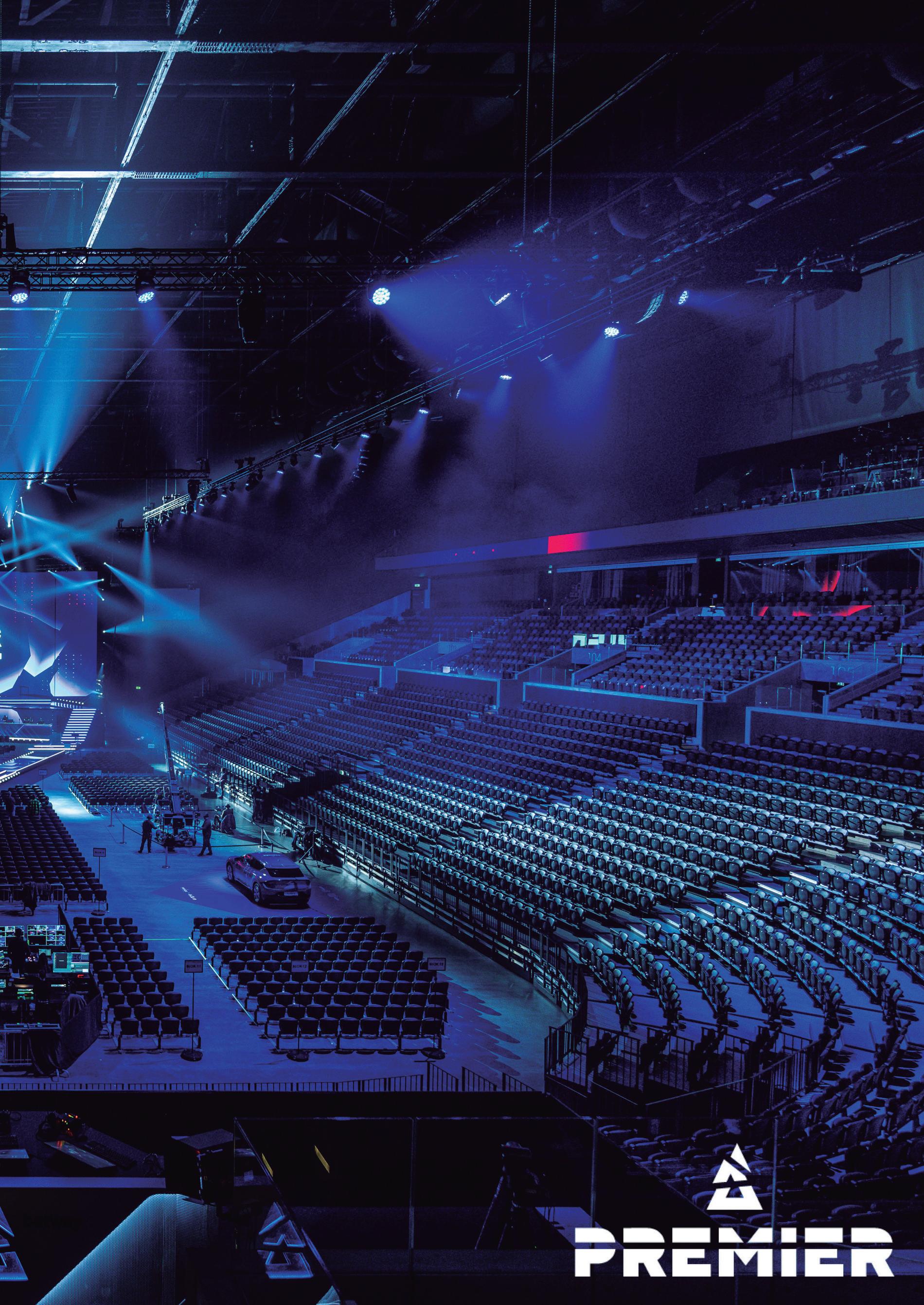
They arrived not long ago and are already the kings among the new generations: eSports are here to stay and their confluence with traditional broadcast formats is creating new ways to enjoy the possibilities that new telecommunications technologies make available to us. In this scene, BLAST.tv stands out as a beacon of innovation and excellence. The platform has quickly become synonymous with cutting-edge broadcasts and a relentless pursuit of increasing viewer engagement through technological advancement. As e-sports continues to carve out a niche in mainstream entertainment, surpassing traditional sports in some metrics, BLAST.tv is playing a pivotal role in shaping the future of this dynamic industry.
They arrived not long ago and are already the kings among the new generations: eSports are here to stay and their confluence with traditional broadcast formats is creating new ways to enjoy the possibilities that new telecommunications technologies make available to us. In this scene, BLAST.tv stands out as a beacon of innovation and excellence. The platform has quickly become synonymous with cutting-edge broadcasts and a relentless pursuit of increasing viewer engagement through technological advancement.
As e-sports continues to carve out a niche in mainstream entertainment,
surpassing traditional sports in some metrics, BLAST.tv is playing a pivotal role in shaping the future of this dynamic industry.
At the forefront of this revolution is BLAST’s Director of Technology, Lasse Brogård Kempf, whose insights into the technological orchestration behind these mega-events illuminate the intricate dance between high-tech equipment and high-stakes competition. Under Kempf’s leadership, BLAST has not only met the challenges of broadcasting in the digital age but has set new standards for how e-sports can captivate and engage a global audience.

Kempf
outlines how BLAST.tv is tailo red to provide more than just a window to watch esports, but a portal to experience the thrill and strategy of competitive gaming firsthand.
54 ESPORTS

In an exclusive interview with TM Broadcast International, Kempf discusses BLAST.tv’s unique features and highlights the platform’s commitment to delivering a superior viewing experience. From leveraging the Unreal Engine in partnership with Epic Games to pioneering the use of detailed real-time stats and dynamic timelines, Kempf outlines how BLAST.tv is tailored to
provide more than just a window to watch esports, but a portal to experience the thrill and strategy of competitive gaming firsthand.
Kempf also delves into the unique challenges of producing live esports events compared to traditional sports, the innovative strategies used to drive online engagement, and the forward-thinking partnerships that enhance
the content and format of their tournaments. This comprehensive interview highlights not only BLAST’s technological prowess, but also Kempf’s vision for integrating new technologies such as SMPTE ST 2110 and remote production capabilities, setting the stage for future advancements that promise to further revolutionize the esports broadcasting landscape.
55
What are the distinctive features of Blast.tv?
As Director of Technology at Blast, my primary commitment is ensuring the highest quality in every aspect of our productions. At Blast.tv, we emphasize delivering a superior viewing experience, whether our audience is live in the arena or watching from home. This commitment to quality extends from selecting the best cameras and equipment to integrating cutting-edge technologies, such as using Unreal Engine in partnership with Epic Games. We aim to push the boundaries of what is possible in broadcasting esports events, which often includes innovating beyond industry norms. Our technical setups, for instance, feature extensive use of automation to manage the complex data flows typical in virtual environments. This allows us to minimize errors and enhance the dynamic elements of our broadcasts. Each event is a testament to our robust technical
infrastructure and our team’s ability to leverage technology creatively and effectively to connect with a global audience.
And
what are the most significant technological advancements sorry that recently implemented on the blast tv platform?
I’m particularly excited about our recent technological strides with the BLAST.tv platform. One key advancement is our approach to owning the end-user platform, which allows us to tailor the viewing experience far beyond what generic streaming services o ff er. This ownership means we can integrate deeply detailed, real-time statistics and a dynamic timeline feature. Viewers can not only follow live game stats but also navigate through the game’s progress with an interactive timeline, enabling them to jump to key moments instantly without losing context.
Moreover, we’ve developed our own internal storage solutions and content distribution systems. This move away from relying solely on external third-party services for hosting and data storage gives us greater control and enhances our content delivery’s reliability and efficiency. For instance, we’ve implemented an innovative layer atop existing platforms to streamline global distribution. This makes our operations both more cost-effective and scalable.
Crucially, we’re leveraging automation in nearly every facet of our platform. This isn’t just about efficiency; it’s about consistently enhancing the product we offer to our audience, whether they’re in the arena or watching from home. By automating routine tasks, our team can focus more on innovation and creating richer, more engaging viewer experiences. This philosophy underpins our recent growth and supports our mission to continuously evolve and improve BLAST.tv.
56 ESPORTS
Each event is a testament to our robust technical infrastructure and our team’s ability to leverage technology creatively and effectively to connect with a global audience.

57 BLAST.TV
Can you describe some of the unique challenges of producing live sport e-sports events compared to compared to traditional sports as tennis?
Absolutely, the unique challenges of producing live esports events compared to traditional sports such as tennis became particularly evident during the COVID era. For instance, we utilized one of the largest OB trucks in Europe, the UHD1 from NEP, which is also used for events like the Eurovision. This truck is well-equipped for broadcasting large-scale
sports and entertainment events. However, producing an esports event like ours introduces distinct technical and experiential demands.
In traditional sports, the production focuses on capturing the physical world—the actual sport and performance occurring in real time and space. In esports, while we still capture the spectacle of the event—the stage, the crowd, the intensity of the competitors—the main action is virtual. For example, during a Fortnite event, we might run up to 25 computers to display the in-game action, each with its own embedded audio and multiple graphic outputs to enrich
For the BLAST TV Major in 2023, for instance, we placed cameras both in front of and behind every player. This setup captures all the raw emotions and reactions, providing a comprehensive view that makes viewers feel as though they are physically present at the event.
the viewer’s experience. This setup highlights the challenge of latency, as the transition from action happening in-game to its display on screens in the arena must be nearly instantaneous to keep the audience engaged.
I would say that the virtual nature of esports means that our production needs to handle and present a massive amount of data live. This involves a complex setup not typically required in traditional sports broadcasts. The virtual game world we create and broadcast is densely datadriven, and leveraging this data effectively is crucial to enhancing the audience’s experience.
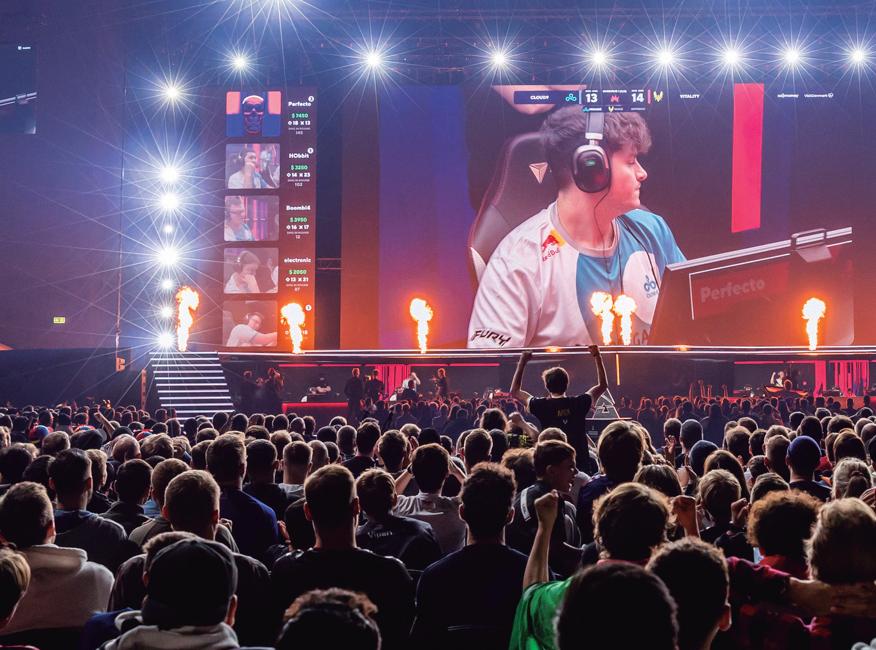
58 ESPORTS
Another major aspect of our productions is maintaining a connection between the virtual and the physical. It’s not just about watching a game; it’s about experiencing the emotions and reactions of the players. This requires a delicate balance between in-game action and player-focused cameras, ensuring viewers feel a deep connection with the players and the overall event. We also integrate specialized screens and audio solutions to maintain competitive integrity and prevent any tactical information from being inadvertently conveyed to the competitors, such as the position of players behind in-game walls.

At the end of the day, producing esports events is a complex integration of virtual and real-world elements, where both need to function in harmony to deliver a compelling, engaging, and fair viewing experience.
With
esports viewership predominantly online, what innovative strategies has BLAST.tv employed to enhance viewer engagement during live broadcasts?
Enhancing viewer engagement for online audiences is paramount, especially given the predominantly digital consumption of esports. At BLAST.tv, we’ve employed several innovative strategies to captivate our audience during live broadcasts. From a technical standpoint, our focus on high-quality graphics and immersive elements is crucial. For example, our “listening segment” allows viewers to hear real-time communications from
the teams. This access transforms viewers from passive observers into engaged participants, giving them a behind-the-scenes experience that’s rare in traditional sports.
We also host what we call “community streams,” which cater to specific audience segments by providing tailored content that resonates with their interests. Our approach combines toptier talent from traditional entertainment—people who’ve worked on grandscale productions like Eurovision—with experts who deeply understand the intricacies of the games we showcase. This blend ensures that our broadcasts have both the spectacle of major television events and the authenticity that hardcore gamers expect.
For the BLAST TV Major in 2023, for instance, we placed cameras both in front of and behind every player. This setup captures all the raw emotions and reactions, providing a comprehensive view that makes viewers feel as though they are physically present at the event.
59 BLAST.TV
The static nature of players during esports events allows us to place cameras in unique positions, offering angles that are not feasible in traditional sports. This attention to detail in how we film our shows is greatly appreciated by our audience, enhancing their connection to the players and the game, thereby bringing the entire experience closer to home.
How do partnerships with major game publishers like Epic Games and Ubisoft influence the content and format of your tournaments?
My perspective on our partnerships with major game publishers like Epic Games and Ubisoft is heavily influenced by the technical innovations these collaborations bring to our tournaments. Epic Games, for instance, is renowned for the Unreal Engine—a cornerstone in the evolution of game graphics and real-time rendering. Our partnership allows us to leverage
technologies like the newly developed Motion Designer tool (formerly known as Avalanche) to push the boundaries of broadcast graphics in esports. This technology enables us to create visually stunning and dynamic graphics that are seamlessly integrated into our live broadcasts.
Working closely with a publisher who is as tech-savvy as Epic Games is not only exciting but also immensely beneficial. It ensures that we are at the forefront of technological advancements, allowing us to constantly innovate and improve the viewer experience during our tournaments.
Turning to Ubisoft, our collaboration goes beyond technology to deeply understanding and engaging with the gaming community. For instance, our work with Ubisoft Brazil on the SI tournament was instrumental in tailoring the event to resonate with local audiences. Ubisoft’s insights into their community’s preferences and behaviors helped us craft a tournament that not
only met but exceeded fan expectations. The reaction from fans and the overall community engagement were testaments to the success of this approach.
In summary, partnerships with game publishers like Epic Games and Ubisoft profoundly influence both the content and the format of our tournaments. They allow us to harness cutting-edge technology and gain invaluable insights into the gaming community, ensuring that our events are both technologically advanced and deeply connected with our audience.
What specific technologies are you currently using to handle the complexities of esports productions, especially regarding live streaming?
Handling the technical complexities of our esports productions, especially in live streaming, is a task we approach with rigorous planning and state-of-theart technology.
60 ESPORTS
Our core setup includes the Sony XVS 8000 switcher, which supports a 5 M/E workflow with 40 kiosk and 10 ADP, coupled with a MediorNet UHD routing system for impeccable signal management.
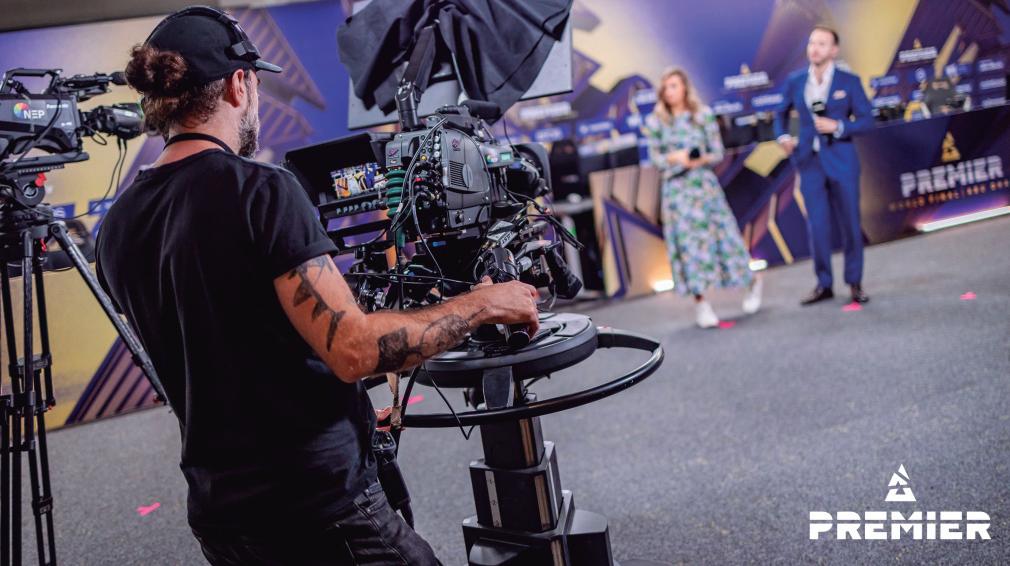
Our productions are inherently tech-heavy, and to manage this, we employ a range of sophisticated equipment and systems.
Our core setup includes the Sony XVS 8000 switcher, which supports a 5 M/E workflow with 40 kiosk and 10 ADP, coupled with a MediorNet UHD routing system for impeccable signal management. This setup is crucial for handling the vast amounts of audio and visual data our events generate.
Additionally, for more extensive broadcasts like the Fortnite events or major
tournaments in Paris, we use what we internally call Flight Pack 2. This system is built around the Grass Valley K-Frame XP, which comes with nine M/Es and is capable of handling 54 kiosk outputs. The K-Frame XP is fully equipped for 4K production, supporting all associated DBS and keyers. It integrates seamlessly with our 270 squared Ultrix routing system, which is crucial for 12G-SDI workflows.
Regarding network infrastructure, our approach is equally robust. For instance, at the SI event held in an older arena, we
installed 50 to 60 access points and established a comprehensive network setup to ensure connectivity and bandwidth management across the venue. Redundancy is key in our operations; thus, we always have dual ISP connections to maintain internet reliability.
We also handle encoding through a partnership with InSync, a critical component in our distribution chain. Once we receive the feeds, they are processed through our platform, which we’ve developed in-house to manage distribution effectively.
61 BLAST.TV

The scale and sophistication of our technological deployment often surprise those who might still perceive esports as a smallscale or amateur endeavor. Indeed, while tools like OBS and Companion are part of our toolkit, especially for smaller-scale productions, our flagship events deploy complex, integrated systems that reflect the high stakes and professional standards of major broadcast events.
How has BLAST.tv optimized its media workflow to manage the high volume of content produced during tournaments?
At BLAST.tv, optimizing our media workflow to handle the extensive volume of content we produce during tournaments is critical. We’ve implemented several strategies to manage this efficiently.
Firstly, we believe in creating our own tailored solutions. We have developed our own storage systems to ensure that our content is securely stored
and readily accessible. Currently, we operate five NAS (Network Attached Storage) systems spread across our various offices and production facilities. These NAS systems are equipped with NVMe drives for high-speed data access and are a mix of models from QNAP and Supermicro, which are based on TrueNAS software.
To handle the global distribution of our content, we utilize Media Shuttle by Signiant. This tool allows us to move large data sets quickly and securely around the world, which is crucial for our international operations. Whether it’s transferring raw footage, finished broadcasts, or any other large files, Media Shuttle supports our need for speed and reliability.
Additionally, for on-site production work, especially when we are dealing with large volumes of data, we use Parsec. This software not only aids in the real-time transfer of video feeds but also supports our remote production capabilities.
It allows our production team to collaborate effectively, regardless of their physical location, ensuring that our broadcasts are seamless and professional.
Through these technologies and custom solutions, we’ve optimized our workflow to manage the high volume of content efficiently, ensuring that we can continue to deliver top-quality broadcasts to our audience worldwide.
What new technologies are you most excited about integrating into BLAST.tv’s production in the near future?
I am particularly excited about the integration of SMPTE ST 2110 into our production workflows. At BLAST, we are always looking to be at the forefront of broadcasting technology, especially technologies that enhance our network capabilities. The adoption of SMPTE ST 2110 is compelling because it represents a significant shift towards a more unified
and flexible production environment. This standard allows for the separation of video, audio, and metadata streams over IP networks, which is a game changer. It essentially means that we can move away from traditional hardware dependencies and towards a more agile, vendorneutral setup.
The key advantage here is flexibility. With 2110, we can utilize a single backplane across various hardware from different vendors. This breaks down the vendor lock-in that has traditionally limited broadcast architectures, allowing for more innovative and costeffective solutions. For instance, we can implement high-end multi-viewers for critical broadcasts and opt for simpler or even software-based solutions for less critical needs, all within the same infrastructure.
Looking forward, I see the industry continuing to move towards FPGAbased systems for critical infrastructure, while also embracing software-based environments for additional flexibility.
This dual approach ensures that we can always meet our commercial obligations with high reliability while also experimenting with more creative, cost-effective solutions in other areas.
The integration of SMPTE ST 2110 is just the beginning of how we plan to leverage cutting-edge technologies to continue delivering toptier productions at BLAST.tv, enhancing both our operational efficiency and our audience’s viewing experience.
With the rise of remote production capabilities, how has BLAST.tv adapted its production strategy to accommodate remote workflows?
At BLAST, the adoption of remote production capabilities has been a crucial evolution in how we manage our workflows and broadcasts. Our approach to remote production is centered around flexibility and efficiency, ensuring that we leverage the best of technology while maintaining the high-quality standards our audiences expect.
63 BLAST.TV
For game observation, which is a critical aspect of our broadcasts, we’ve implemented remote observing tools. This means our observers, who control what the audience sees during a live game, can operate from remote locations.

We utilize remote workflows extensively. For instance, our processing hardware is located on-site at events, but many of our team members, including producers and editors, access these systems remotely via platforms like Parsec. This setup allows for real-time interaction with the production environment from virtually anywhere, which has been instrumental in maintaining continuity of operations, especially during situations where travel or physical presence is restricted.
For game observation, which is a critical aspect of our broadcasts, we’ve
implemented remote observing tools. This means our observers, who control what the audience sees during a live game, can operate from remote locations. This flexibility has allowed us to tap into a global talent pool and reduce the need for large on-site teams.
Moreover, while the core production team often remains centralized to ensure cohesive broadcast management, we have transitioned much of our on-air talent to remote work. This shift is not just a response to logistical challenges; it reflects a
broader trend in media production where the physical presence of talent in a studio is becoming less critical. What matters more is their ability to engage the audience and deliver compelling content, which can effectively be done remotely.
In terms of infrastructure, handling international remote productions requires a robust base of operations. This base ensures that we can manage latency and maintain reliable connectivity, critical factors in delivering a seamless viewing experience.
64 ESPORTS
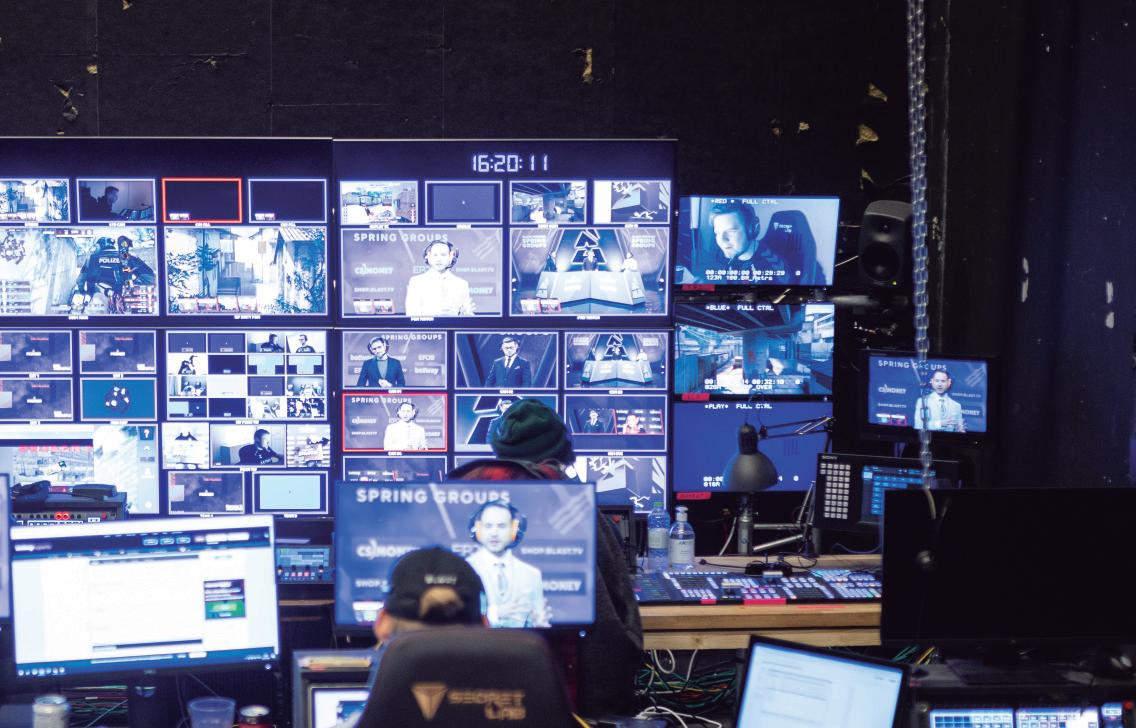
Our international perspective means that we must optimize our workflows to handle various challenges associated with global broadcasts, including time zone coordination and international communication.
Overall, our strategy for remote production is about harnessing technology to make our operations as agile and scalable as possible, ensuring that we continue to deliver thrilling esports content to our global audience, no matter where our production sta ff or onair talent are located.
As esports continues to grow, what new monetization models
are
you exploring to leverage BLAST.tv’s content and viewership?
At BLAST, as we see continued growth in esports, our approach to monetization evolves to leverage our content and expanding viewership innovatively. We consistently explore new models that not only enhance viewer
engagement but also create valuable opportunities for sponsors and partners.
One key area we focus on is integrating commercial partnerships directly into our gaming content. For instance, during our broadcasts, such as the BLAST.tv Major, we have multiple sponsorships with a range of partners. These partnerships are not just limited to traditional ad placements; we integrate them into various aspects of the game environment itself, providing a seamless experience that resonates more effectively with our audience.
65
A prime example of this was our partnership with KitKat during a Dota tournament in 2020, where we integrated the brand directly into the game environment. This wasn’t just placing a logo on the screen; it was about making KitKat a part of the game experience, enhancing the immersion without disrupting gameplay. Such integrations require close collaboration with game publishers and a deep understanding of what our audience values, ensuring that any commercial content adds to the viewer experience rather than detracting from it.
Furthermore, we’re looking into digital branding opportunities, such as dynamic in-game advertising that adapts to the game context or specific viewer interests. This could be through cobranded content, special in-game events, or unique viewer interactions that are only possible with a robust technological infrastructure. We believe that our strength in technology not only supports our
broadcast capabilities but also enhances our commercial partnerships. Our tech team’s expertise allows us to experiment with and implement advanced advertising models that go beyond conventional methods, providing our partners with unique ways to engage with esports audiences.
Going forward, we aim to push the boundaries of how commercial content is integrated into esports, ensuring that these initiatives are both authentic to the game environment and add value to our viewers’ experiences. This approach not only diversifies our revenue streams but also reinforces BLAST.tv as a pioneer in the esports industry.
How do you see the evolution of esports affecting traditional media consumption over the next decade?
I’ve observed significant trends in media consumption that are being influenced by the evolution
of esports, and I expect these trends to shape the future of traditional media over the next decade.
One key aspect we’ve noticed is the move towards personalization and a closer connection with personalities within the media, a trend that’s evident not only in esports but across various platforms. On platforms like YouTube, individual creators achieve follower counts that rival traditional TV audiences. This shows a shift towards content that feels more personal and directly engages with viewers.
In esports, this trend manifests in our efforts to make our broadcasts accessible and appealing to diverse audiences. For example, by partnering with personalities like Gaules, we can extend our reach and engage with communities that might not be reached through traditional broadcasting methods. This inclusivity is crucial as it allows us to tap into the dedicated followings of these influencers, adding a new layer of engagement to our shows.
66 ESPORTS
The competition between traditional broadcasts and individual streamers has highlighted the undeniable truth that content is king. This is why we prioritize offering a high-quality world feed that other producers can use to enhance their own broadcasts. My background at Denmark’s Radio, where I worked on the receiving side of esports feeds, has informed our strategy to ensure that our feeds are adaptable and valuable to other content creators. This involves providing clean feeds without extraneous commentary that may not be relevant to all audiences.
Looking forward, I believe these trends will continue to drive the evolution of traditional media. The focus will increasingly be on delivering content that is not only high quality but also customizable and closely aligned with viewer preferences. This shift will likely prompt traditional media outlets to innovate further and adopt more flexible and viewer-centric approaches, much like those we are pioneering in the esports industry.

This
shift will likely prompt traditional media outlets to innovate further and adopt more flexible and viewer-centric approaches, much like those we are pioneering in the esports industry.
67 BLAST.TV
Which possibilities do you think 6G is going to bring to the eSports and tournaments’ broadcasting world?
As the Director of Technology for BLAST, the advent of 6G is something I am particularly excited about, especially considering its potential impact on esports and broadcast technology. From what I understand, 6G will not just be a step up from 5G in terms of bandwidth; it’s expected to revolutionize how we connect and interact wirelessly on a much larger scale.
6G is anticipated to offer significantly more bandwidth, which can transform how we handle wireless communications and data transmission. This increase in capacity will be crucial as we continue to push the boundaries of what’s possible in esports broadcasting.
From a production standpoint, 6G could enable us to achieve
much more dynamic live coverage. We’re looking at the potential for deploying more cameras in strategic locations without the constraints of current wireless technologies. This means we can get closer to the action, capture more angles, and provide a richer viewing experience for fans. Whether it’s placing cameras closer to players, around the arena, or even outside where fans gather, the goal is to bring our audience into the heart of the action as seamlessly as possible.
I’d say 6G could greatly simplify the deployment of networks necessary for large-scale live events, reducing the need for extensive physical infrastructure. This would not only reduce setup times and costs but also allow us to be more agile and responsive to the dynamics of live esports events. For instance, if there’s a watch party happening, we could quickly integrate a local camera into our live feed, enhancing our coverage and engaging more directly with our community.
The prospect of 6G means that we can look forward to hosting broadcasts that are more inclusive and expansive, reaching audiences in ways that were previously unfeasible due to technological limitations. This will inevitably bring our audience closer to the esports they love, fostering a more immersive and interactive experience.
Are there any initiatives or technologies that BLAST.tv is exploring to make esports events more sustainable or environmentally friendly?
Sustainability in our operations, especially in the context of esports events, has become an increasingly significant focus in recent years. Our efforts to minimize our environmental footprint begin with our technological infrastructure and extend to the broader operational aspects of our events.
68 ESPORTS
One primary area where we’ve made substantial improvements is in our power consumption choices. Whether it’s our office networks or our broadcast studios, we’ve been deliberate in selecting equipment that is energy efficient. We understand that making the right choices in technology that runs continuously, 24/7, has a far-reaching impact. For instance, choosing power supplies for our computers is not just about meeting performance needs but optimizing energy efficiency. We opt for platinum or titanium-certified power supplies and design our systems to operate at peak efficiency around the 50% load mark. This approach not only maximizes
We continuously seek smarter paths to efficiency, integrating sustainability into our decision-making processes.
efficiency but also extends the longevity of the equipment.
Furthermore, in the broader scheme of our event productions, we are mindful of our resource utilization. For example, the PCs we acquired for gaming in 2019 are still in use today, repurposed for less resource-intensive tasks such as video editing or used by coaches. This strategy ensures that we extend the lifecycle of our technology and avoid unnecessary waste and replacement costs.
We also explore more innovative, hyperconverged solutions that allow us to reduce our physical hardware footprint and thus our power
usage. By integrating more functions into fewer pieces of hardware, we not only save on energy but also reduce the overall resource demands of our production setup.
While we may not have launched a large-scale public initiative specifically targeted at sustainability, it is embedded in our operational philosophy. We continuously seek smarter paths to efficiency, integrating sustainability into our decisionmaking processes. This approach isn’t just about being better corporate citizens—it’s about setting a standard in the industry for how technology can be leveraged responsibly while still delivering top-tier entertainment.
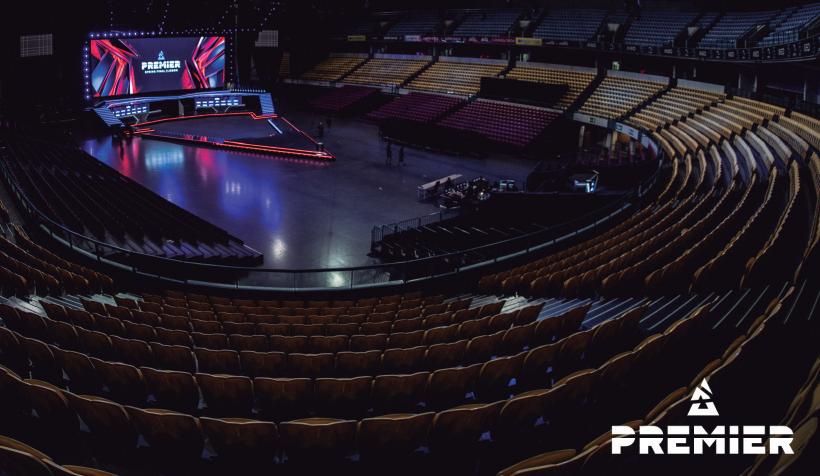
BLAST.TV
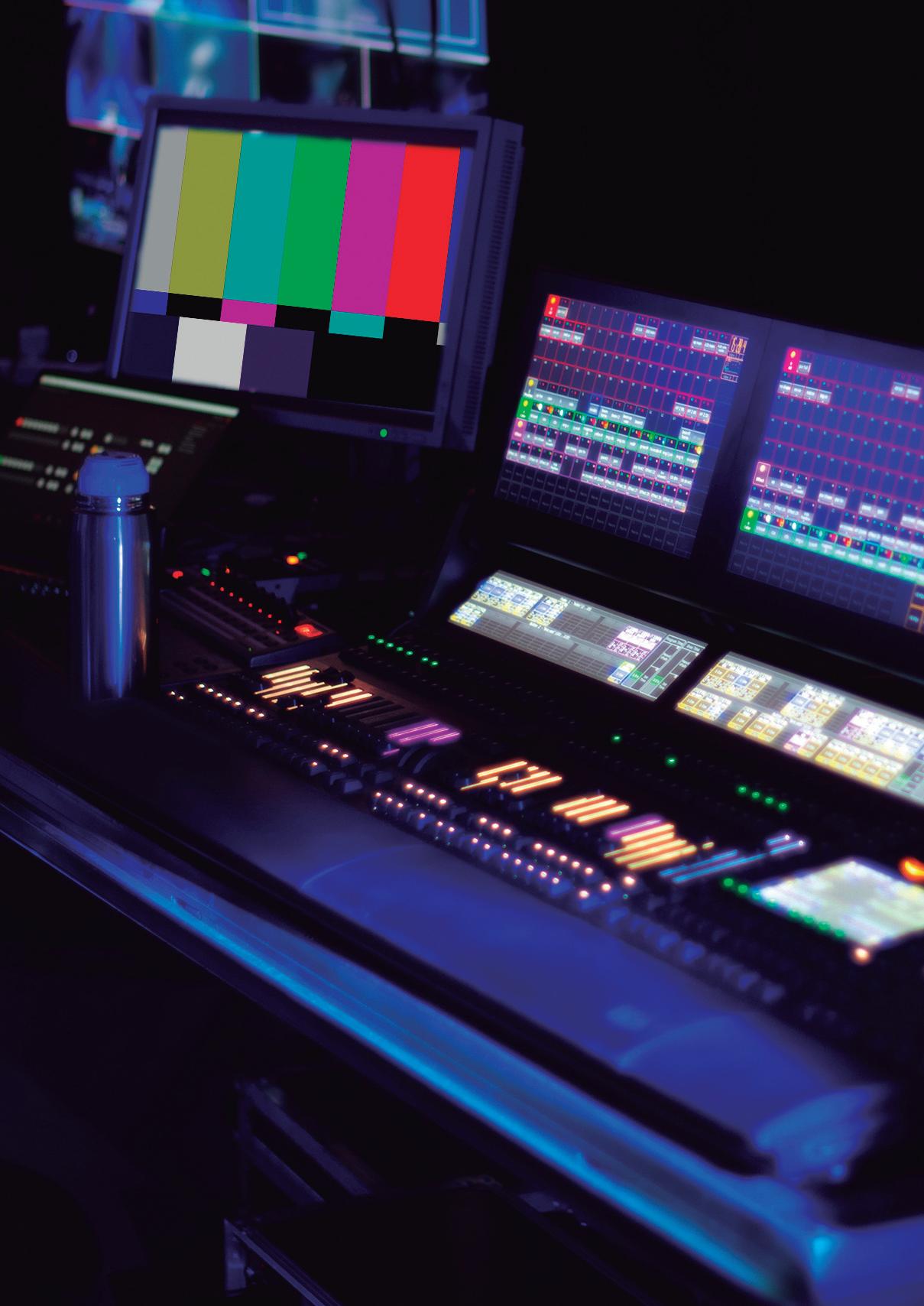

Unveiling the Future Dive into CABSAT and MPTS 2024
As the seasons change and we approach the spring season of innovations in media technology, two seminal tradeshows stand poised to capture the attention of professionals across the globe. The Media Production & Technology Show (MPTS) in London and CABSAT in Dubai are setting the stage to showcase the latest in broadcast, media, and technology. These pivotal events offer attendees a sneak peek into the future of the industry with ground-breaking workshops, panel discussions, and networking opportunities that promise to enrich and educate.
Our upcoming article provides a comprehensive preview of both MPTS and CABSAT, serving as an essential primer for attendees of these high-profile gatherings that will take place during the month of May. Our article provides detailed coverage of the sessions, keynotes, and special features scheduled for these events. It aims to equip you with the insights you need to navigate these extensive tradeshows effectively. This article is designed to serve as a comprehensive guide for professionals at all levels, from seasoned experts seeking to stay ahead of technological advancements to newcomers eager to absorb industry knowledge. It will equip you with the insights needed to make the most out of MPTS and CABSAT 2024.
CABSAT
CABSAT (May 21st to the 23rd) celebrates its 30th anniversary in 2024 and remains the leading event in the Middle East, Africa, and South Asia for the satellite and broadcast industries. It offers workshops, panel discussions, and product demonstrations, drawing professionals from all over the world. This event is key for those interested in the technological and market developments in these regions.
Since its inception in 1993, CABSAT has become the leading event for the media, entertainment, and satellite communications industry in the Middle East, Africa, and South Asia (MEASA). Held annually in Dubai, with 18.000 expected visitors in 2024, CABSAT showcases the latest innovations and facilitates critical industry networking, drawing participants from over 120 countries to discuss trends and technologies shaping the industry.
Historical Context and Evolution of
CABSAT
CABSAT has consistently been at the forefront of technological and creative trends in the MEASA region’s media sector. Over the past 30 years, it has grown from a regional conference into a major international hub for innovation in media,
broadcast, and satellite communication. The event has been instrumental in facilitating the transition from traditional media formats to digital platforms, reflecting the region’s rapid media evolution and its burgeoning role as a content creation hub.
Industry Impact and Technological Integration
CABSAT’s influence on the industry is profound, serving as a launch pad for new technology and a meeting ground for industry leaders. It has been a catalyst for significant business deals and partnerships, driving innovation especially in satellite and broadcast technologies. The event’s focus areas have broadened over the years to include next-generation tech like AI, OTT content strategies, and immersive media, keeping pace with global trends.
72 TRADE SHOWS

CABSAT 2024:
Exhibition Hall Activities
This landmark edition not only marks three decades of innovation and connections but also promises an array of groundbreaking activities, workshops, and exhibitions that cater to industry professionals from around the globe.
Highlighting Co-Production and Content Congress
One of the major highlights of CABSAT 2024 is the Co-Production Lounge, designed as a dedicated meeting zone for fostering investment in Arabic content and attracting foreign TV and film projects within the MEASA region. This platform will explore various funding avenues including brand integration, private investment, and
product placement, making it a pivotal area for producers looking to finance their next big project.
Simultaneously, the Content Congress will serve as a central forum under the theme “Shaping the Media Narrative: Where Insights Ignite Change.” This congress is expected to draw key media leaders and in fl uencers who will discuss the evolving landscape of television, video, and digital content. The sessions will delve into the next era of media, focusing on the shift towards over-the-top (OTT) content and its implications for content creation, distribution, and monetization.
Virtual Production Studio Demonstrations
A standout feature at CABSAT 2024 will be the Virtual Production Studio demonstrations.
These sessions will provide valuable insights into the creation and utilization of virtual sets, which are becoming increasingly popular in film, television, and live event productions. The demonstrations will cover the entire process from pre-production to post-production, emphasizing the efficiency, cost-effectiveness, and creative freedom afforded by virtual production technologies.
The sessions will delve into the next era of media, focusing on the shift towards over-the-top (OTT) content and its implications for content creation, distribution, and monetization.
73 CABSAT & MPTS
SATExpo Summit: A Glimpse into the Future of Space Exploration
The SATExpo Summit will complement the terrestrial focus of the Content Congress by bringing together experts in satellite and space technology. The summit will address key topics such as sustainable space exploitation and the future of Earth observation. With a focus on innovation and strategic partnerships, SATExpo will explore how advancements in satellite technology can support life on Earth and foster new business models in the industry.
Discussions at the SATEXPO Summit will cover a wide range of topics including the integration of High Altitude Platform Stations (HAPS) with satellite networks, the use of satellites in transforming mobile connectivity, and the role of new satellite technologies in enhancing airborne and maritime communications. The agenda also includes technical sessions on the development of the digital

cloud in orbit, strategies for managing spectrum across multi-orbit environments, and the potential of AI and automation in improving satellite communication processes.
Engaging in Deep Conversations and Networking Opportunities
CABSAT 2024 will provide ample opportunities for attendees to engage in deep, meaningful
conversations on topics ranging from social and environmental responsibility in media to the impact of emerging technologies like AI on content production. Networking events will connect attendees with high-profile figures from the global media community, offering chances for collaboration and partnership that extend beyond the duration of the conference.
74 TRADE SHOWS
Discussions at the SATEXPO Summit will cover a wide range of topics including the integration of High Altitude Platform Stations (HAPS) with satellite networks, the use of satellites in transforming mobile connectivity, and the role of new satellite technologies in enhancing airborne and maritime communications.
Integrate Middle East
Additionally, the event will feature the second edition of Integrate Middle East, which highlights the rapid growth of the Pro AV market in the region. This forum will focus on the integration of AV technology in various sectors such as education, media, entertainment, and hospitality. Integrate Middle East will showcase the latest in digital signage, e-learning advancements, and smart building technologies, reflecting the broader trends towards digital transformation in the Pro AV industry.
Networking and Interactive Opportunities
CABSAT 2024 will offer numerous opportunities for networking, with spaces designed to foster interaction among attendees, exhibitors, and speakers.
This includes a premium networking lounge for those with exclusive access, providing a more intimate environment for discussions and collaborations.
Educational and Inspirational Talks
Exclusive Access with Premium Passes
For those seeking an elevated experience, CABSAT 2024 offers Premium Passes, which provide exclusive access to special events and a networking lounge. These passes allow for more personalized interactions and are ideal for professionals looking to maximize their impact and presence in the industry.
The event will host a range of speakers and panelists from across the globe, including industry leaders, innovators, and visionaries who are shaping the future of the broadcast, satellite, and digital content sectors. Participants will have the chance to gain insights from pioneers like Manoj Abraham Mathew, Nathalie Habib, and Bilal Dayani, among others, who will share their expertise on navigating the challenges and seizing the opportunities in today’s rapidly evolving media landscape.

75 CABSAT & MPTS
Media Production and Technology Show (MPTS)
The Media Production & Technology Show in London stands as the UK’s premier event for media and broadcast technology since its first edition in 2016. This event brings together technology and creativity under one roof, providing an extensive platform for networking, product discovery, and seminars covering all aspects of the broadcast content lifecycle. With 12,000+ attendees, MPTS caters to a wide range of professionals from pre-production to post-production and distribution.
These events not only highlight technological innovations but also address the strategic and regulatory environments impacting the broadcast and audiovisual industries. They provide platforms for professionals to gain insights, forge partnerships, and move the industry forward in an era of rapid technological change. Let us continue to follow these meetings to predict future market movements and the next technological developments that will shape our professional universe.
Historical Context and Evolution
Originally launched in 2016, MPTS rapidly established itself as the UK’s premier event for the media and broadcast industries. It began with a focus on the creative aspects of content production but has increasingly embraced technological innovations that shape the industry. This shift mirrors the industry’s evolution from traditional broadcasting to a more integrated digital media environment, where technology plays a pivotal role in content creation, management, and distribution.
The Media Production & Technology Show in London stands as the UK’s premier event for media and broadcast technology since its fi rst edition in 2016.
76 TRADE SHOWS

Industry Impact and Technological Integration
MPTS has been instrumental in showcasing the latest technologies and facilitating discussions that shape the future of media production. This includes the introduction of new technologies such as virtual production, AI, and cloud-based workflows, which are now central to the industry. The show’s focus on these areas not only reflects but also influences current trends, providing a platform for professionals to explore and adopt new solutions.
MPTS 2024: What to Expect
The 2024 edition of MPTS is set to be a comprehensive event with the introduction of the Media Technology Conference in partnership with SMPTE UK. This new
addition will focus on emerging technologies, AI for media, and the latest innovations in broadcasting. The conference aims to provide a more focused environment for high-level discussions among C-suite and senior technology leaders, ensuring that it addresses the nuanced challenges and opportunities within the industry.
Scheduled for May 15-16, 2024, at Olympia London, MPTS offers an expansive free seminar program, featuring over 250 speakers spread across eight venues. The program includes keynotes, master classes, panel discussions, and educational sessions.
Attendants to MPTS 2024 shouldn’t miss…
The event kicks off with a Director’s Master class by James Hawes and
James Strong, among others. Notable sessions will include an executive producer’s insights into the making of the Netflix feature “Scoop,” based on Prince Andrew’s controversial interview, and a production master class on the ITV drama “Mr Bates vs. The Post Office.” Historian Dan Snow will share his journey in creating the successful “History Hit” podcast.
Scheduled for May 15-16, 2024, at Olympia London, MPTS offers an expansive free seminar program, featuring over 250 speakers spread across eight venues. The program includes keynotes, master classes, panel discussions, and educational sessions.
77 CABSAT & MPTS

Audio Theatre will spotlight Johnnie Burn, recent Academy Award and Bafta winner, discussing his sound design for “The Zone of Interest.”
Further discussions will feature Chemmy Alcott on sports broadcasting’s role in environmental sustainability, Marcel Theroux on his documentary “The Playboy Bunny Murders,” and Peter Ettedgui in a special session about his work, including “Super/Man: The Christopher Reeve Story.”
Additionally, the Audio Theatre will spotlight Johnnie Burn, recent Academy Award and Bafta winner, discussing his sound design for “The Zone of Interest.” Attendees can also learn about the BBC/ Glastonbury Festival partnership and Netflix’s documentary series “World War II: From The Frontlines.”
78 TRADE SHOWS
MPTS 2023
Paul Machliss will provide insights into film editing at the Post Production Theatre, which will also cover topics like VFX, grading, and the ACES workflow used in “The Gallows Pole.”
The Virtual Production Theatre will focus on virtual production techniques as demonstrated in projects like «No Way Up» and Apple TV+›s «Hijack.»
The State of the Nation in Broadcast Technology session will unveil the latest in transmission technology and AI integration in media production, with insights from industry leaders at IMG, Gravity Media, and Picture Shop.
The AI Forum will offer guidance on leveraging AI technology effectively, featuring research from GlobalData and sessions
on the workforce impacts of AI, with filmmaker HaZ Dulull discussing the ethical and legal aspects of using generative AI.
The Media Technology Conference Leaders Day, led by Simon Farnsworth of ITV, will delve into ITV’s digital transformation and the current broadcast landscape, with contributions from the BBC’s Mark Patrick and Channel 4’s Andy Bell.
Special Features
Although traditionally The Media Production and Technology Show is not usually the stage chosen by major companies to present their latest technological innovations, it is true that the conferences of major figures, technological giants and professional associations not only provide an important boost to the industry, but also make up
the highlight of the annual meeting. Among the rich program of this year’s event, visitors will find these essential moments:
France.tv unveils Hyper-Mobile Broadcasting at Paris 2024 1-Year Countdown
A highlight of MPTS 2024 will be the special presentation by France.tv, titled “Hyper-Mobile Broadcasting at Paris 2024 1-Year Countdown.” This presentation is poised to offer an exciting preview of the innovations that France.tv plans to implement during the upcoming 2024 Paris Olympics. As the official broadcaster, France.tv is set to leverage cuttingedge mobile broadcasting technologies that promise to transform how global audiences experience one of the world’s largest sporting events.
A highlight of MPTS 2024 will be the special presentation by France.tv, titled “Hyper-Mobile Broadcasting at Paris 2024 1-Year Countdown.”
This presentation is poised to offer an exciting preview of the innovations that France.tv plans to implement during the upcoming 2024 Paris Olympics.
79 CABSAT & MPTS
The focus on hypermobile broadcasting stems from the growing need for broadcasters to provide high-quality, real-time content from multiple locations simultaneously, especially in dynamic environments like the Olympics. France.tv’s approach is expected to involve the use of advanced mobile units, enhanced connectivity solutions, and possibly next-generation mobile networks like 5G. This technology will enable the broadcaster to deliver seamless live coverage from various venues, providing viewers with an immersive and comprehensive viewing experience.
TVU One – Enhancing Live Coverage
In conjunction with the presentation on hypermobile broadcasting, there will also be a
showcase of the TVU One technology by TVU Networks. TVU One is renowned for its ability to deliver highdefinition video content over IP networks with minimal latency. The device’s compact size and robust performance make it ideal for mobile journalists and live sports coverage, where mobility and broadcast quality are paramount. The demonstration at MPTS will likely focus on how TVU One can be integrated into broader broadcasting strategies like those planned for the Paris 2024 Olympics, demonstrating its effectiveness in live, onthe-move reporting and coverage.
SMPTE and Other Technical Conferences
The SMPTE (Society of Motion Picture and Television Engineers)
conference at MPTS 2024 is another major draw. SMPTE has been a leading organization in motion-imaging standards and education for the media, entertainment, and technology industries. Their conference sessions are highly anticipated for insights into the latest advancements in video technology, standards, and best practices. Topics likely to be covered include advancements in HDR, 4K and 8K broadcasting, IP-based workflows, and cloud-based production technologies. These discussions are not only technical deep dives but also provide strategic guidance on navigating the future of media production. Additionally, MPTS will host a series of other technical conferences and workshops presented by various tech companies and industry associations.
Highly anticipated for insights into the latest advancements in video technology, standards, and best practices. Topics likely to be covered include advancements in HDR, 4K and 8K broadcasting, IP-based workflows, and cloud-based production technologies.
80 TRADE SHOWS
These sessions are designed to address a wide range of topics, from innovative content production techniques to the latest in visual effects software. Participants can expect to engage with new tools and platforms that are driving the industry forward, with hands-on demonstrations and case studies presented by experts.
Networking and Learning Opportunities
As MPTS continues to grow and adapt, it remains a crucial gathering for anyone involved in the media and broadcast industries, offering insights into current trends and future directions. The integration of new technological discussions into the
program reflects the rapid evolution of the industry and MPTS’s role in shaping its trajectory.
For professionals in the industry, attending MPTS 2024 provides a unique opportunity to stay ahead of the curve, embrace new technologies, and engage with the challenges and opportunities of the digital media landscape.

81 CABSAT & MPTS
MPTS 2023
Lab test performed by
CARLOS MEDINA
Audiovisual Technology Expert and Advisor

This article —dedicated to testing a piece of professional audiovisual equipment— can be somewhat disturbing if we do not proceed to identify the name (acronyms) of the model itself that has been sent to us by the professional audiovisual equipment company Moncada y Lorenzo S.A. (always very friendly and receptive to this type of test).
Multi-brand, multi-camera solution for REMI production CYANVIEW CY-RCP-J
Cyanview (CY) is the name of the manufacturer of the equipment in question. This company, located in La Louvière, Belgium and founded in 2015, designs and manufactures electronic modules for production of live broadcasts. Specifically, Cyanview has become specialized in high-performance equipment such as RCPs (Remote Control Panels).
CY-RCP-J is a remote control panel for one or more image capture devices, and the letter J indicates that it is equipped with a joystick. This model was presented at the NAB (National Association of Broadcasters) Show 2023 in Las Vegas.
Cyanview (CY) has several configuration options available to customers on its RCP-J: two cameras (CY-RCP-DUO), four cameras (CY-RCP- QUATTRO), eight cameras(CY-RCPOCTO) and an unlimited number of cameras (CY-RCP). All these remote panels are multi-brand and multi-camera equipment that offers effective electronic, optical and mechanical control over a wide range of professional video, cinema, PTZ, miniature cameras, color correctors and even compatible gimbals and lenses.
CY-RCP-J is flush-mounting (or stationary) panel for a myriad of broadcast environments; with a size of 94 mm x 355 mm x 50 mm, a weight of 750 g, and a multitude of access modes that favour its seamless integration into workflows of any nature.
In terms of connectivity, this device is equipped on the backside with a DC 12V input (762K Switchcraft), a 10/100 Ethernet
network interface (RJ-45) with 802.3af PoE (Power over Ethernet), two accessory ports for extensions (Tally, Touch Down...) and two USB ports for compatible peripherals (serial converters to directly control RS232, RS422 and RS485 cameras; accessories such as Stream Deck panels, pan and tilt joysticks, or Contour Shuttle playback remotes; Ethernet adapters for additional network ports, Wi-Fi adapter for wireless connection, cellular modems for 3G/4G/LTE connectivity, and dial-up connection for Internet access, among others).
Regarding design and access to the functions of the equipment, Cyanview has provided operators with a 3.5” capacitive touch screen featuring a wide viewing fan angle, buttons (31), knobs (10), four of which are rotary adjustment encoders for navigating menus and adjusting parameters) and a single easy-to-use joystick. Everything very recognizable, seeking to become an integrated piece of equipment for several models/brands of cameras over IP network.
Finally, we are now ready to learn a little more about the features and functionalities offered by this equipment.
First of all, all our readers have to keep in mind the modus operandi used at the CCU (Camera Control Unit) station in a multicamera environment in order to better understand the operability of this remote CY-RCP-J, that allows us to handle several cameras. Therefore, the functionality, operation and performance are reminiscent of those that can be obtained with any OCP (Operation Control Panel) of a single camera.
83 CYANVIEW CY-RCP-J
In this way, once the RCP is connected through IP, we have a dual functionality button: on/off and lock; on the other hand, another main button to access the Menu/Options/Status. Once we have clicked on the menu access, we can browse through the following submenus (which can be seen on the 3.5” capacitive touchscreen):
SCENE. (Files and Config). It is where we will be able to upload and save scene files and even groups of cameras. We can also access those files by name and save/ load presets values. This submenu allows to create subfolders to better organize the settings within the CY-RCP-J and filter them by certain values: PAINT, MATRIX, LUTs, IRIS, ND/SHUTTER, GAIN and PTZF.
PAINT. This submenu is essential for adjusting multiple parameters such as FILTERS, WHITE, BLACK, DETAIL, SKIN DTL, MATRIX, GAIN, GAMMA, KNEE, SHUTTER, COLOR, LOOK and DENOISE.
In this sense, the CY-RCP-J remote panel is a real wonder for operators with knowledge and experience, because they can modify a multitude of values for the above-mentioned parameters. For example: ATW, AWB, ABB, CC Filter, Flare, Limiter Detail, Dark Dtl, Saturation Skin, Color Space, Gain dB/ISO, White Clip, Gamma Tablets, FPS, among others.
CAMERA. It will allow us to work on AUTO or EXPOSURE, with parameters such as GAIN, IRIS, ND, SHUTTER, A.FOCUS, AWB, ATW, ABB. We can also control the POWER and TALLY of the camera(s) from this panel.
LENS. We find this submenu very interesting since we will be able to configure LENS (for configuration/ information of external lenses) and PTZF (dedicated to control/operation of PTZ models) in settings as important as IRIS, ZOOM, FOCUS, the capture device model, SHADING, PAN and TILT movements, activate digital zoom and image stabilizers.
Control and operation of PTZs can be done through encoders (position/ absolute control) or by means of the touch screen (speed/relative control).
In addition, we can save/load 10 presets defined by the operator of the CYRCP-J panel to have faster access and immediate operability during the event we are carrying out with the multicamera.
PREVIEW. Camera, Keypad, List, and Groups.
RECORD. REC, Rec Status, Replay.
SYSTEM. By entering this submenu we can configure the assignment of functions for the upper 10 buttons and 4 encoders (the knobs below the screen) and/or display settings for the CY-RCP-J panel. It also presents network information (IP Address, DHCP Address, etc.) and system information (OS Version, Licence, etc.). We have access to GPIO, POWER, and other settings.
The allocation of functions on the buttons and encoders is quite extensive, in addition to having a configuration capable of working in LIVE mode (broadcast) or in RECORD mode (cinema).
84 TEST ZONE
Next, we continue our review of the CY-RCP-J remote panel with an interesting range of buttons and knobs to adjust, control and provide values to some technical parameters such as:
2 rotary knob/encoders for white balance (R/B).
2 rotary knob/encoders for black balance (R/B).
1 rotary knob/encoder for black level.
2 buttons (MODE/AUTO) with 1 rotary knob/encoder for individual iris, gain and shutter settings.
3 camera selection buttons (switch from one to the other, keeping in mind that this model being tested is unlimited in the number of cameras) and PREVIEW monitoring.
5 quick access buttons to preconfi gured and saved scene fi les.
2 ND value adjustment buttons.
2 CC value adjustment buttons.
2 GAIN value adjustment buttons.
2 SHUTTER value adjustment buttons.
1 confi gurable joystick for IRIS operation and with a lower wheel for pedestal control of the video signal for the selected camera.
Finally, we have a small vertical OLED screen that is large enough to see the values that we modify with each button of the ND, CC, GAIN and SHUTTER parameters.
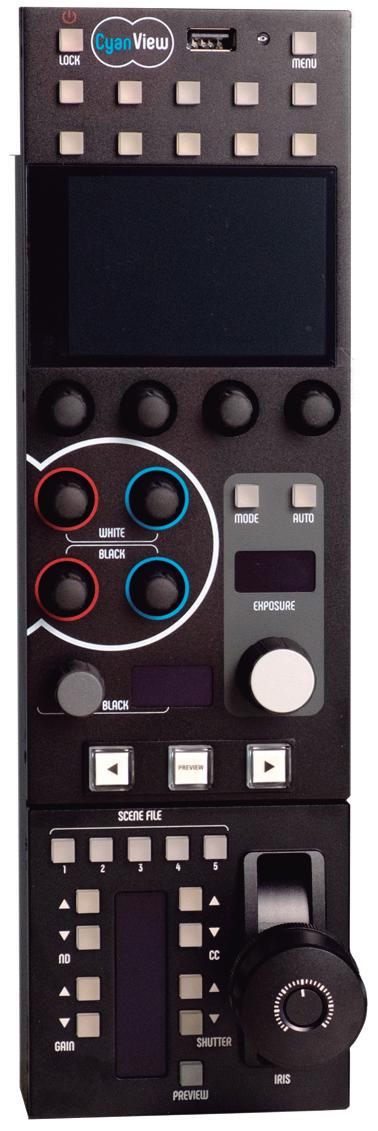
85 CYANVIEW CY-RCP-J



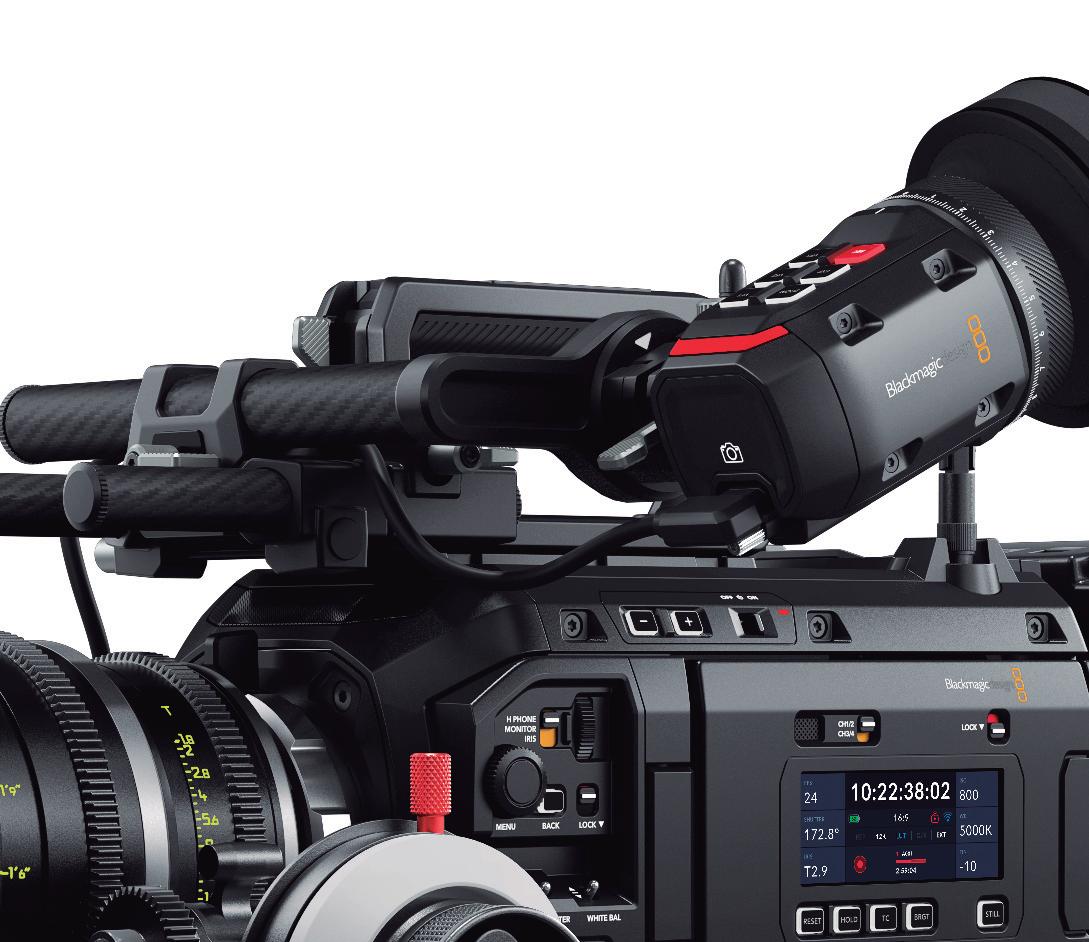
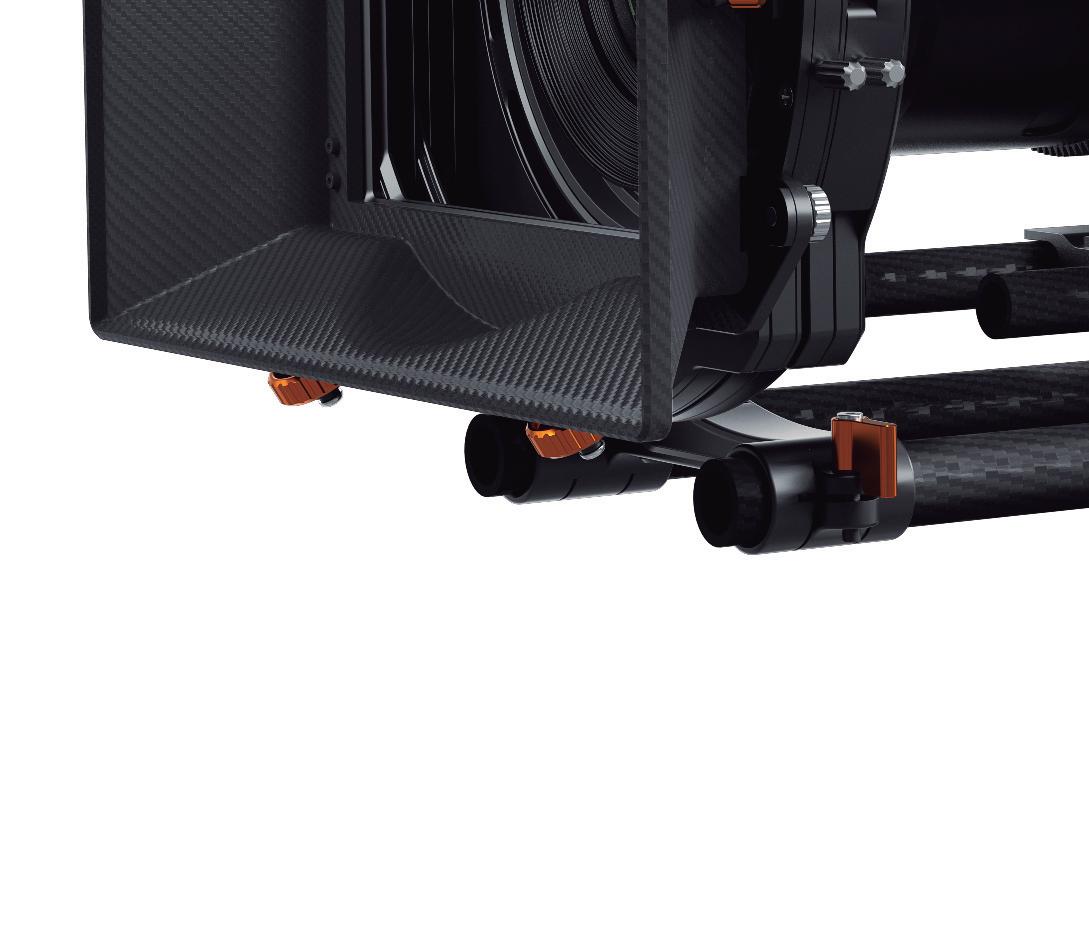


Being this one a multibrand device, it is very remarkable how well it has been received to become integrated with different manufacturers from very diverse fields and very different environments:
Special cameras:
AIDA SDI and NDI mini-cameras; AJA Rovocam; Blackmagic
Micro Studio; Camera Corps: Meerkat, QX Minizoom and Qx/ Qball; CIS VCC Series; Canon ME200 and Toshiba IK Series; Dreamchip: Atom One mini-cameras and Atom SSM500 slow motion; IDT slow motion; IO Industries Victorem mini-cameras; Marshall: mini-cameras


and zoom block cameras; Sony FCB Blocks.
PTZ Cameras : Agile ARC360 (now MRMC); Aida; Birddog: P200, P400, P4K; Bolin Technology; Camera Corps; Canon; Lumens; Marshall; Panasonic: HE/EU Series; Ross PivotCam; Sony BRC.
86
TEST ZONE
Blackmagic Design URSA Cine 12K
Camcorders (ENG / Compact):
Blackmagic Ursa Series; Canon XF Series cameras; Hitachi DK Box cameras; Ross AcidCam; Panasonic: CX Series, UB300 Box camera, P2HD Series; Sony: LANC camcorders, 8-pin camcorders, P1/P50 Box cameras and system cameras.
D-Cinema
ARRI: Alexa and Amira; Blackmagic Ursa Series; Canon EOS C-Series; Panasonic: EVA-1 and Varicam; Sony: FS5, FS7, FX9 Lanc camcorders, F3, F5, F55, Venice D-Cinema.
We have to emphasize that the Management CyanView PC software is essential as the IP network’s user interface for aspects such as setup (adding and con fi guring camera, devices, drivers...), GPIO (General Purpose Input/Output) operating Tally or video routing; virtual video switcher, updates and statuses of the management
device, and instant fi le con fi guration access.
In addition, through Management PC it is possible to create groups of cameras to use when an adjustment needs to be made on several cameras at the same time. The RCP contains a default group called “All”. For example, to recover a position in PTZ cameras or perform white balance.
Undoubtedly, we can definitely say that Cyanview has succeeded in making available to audiovisual professionals equipment featuring a lot of reliability and features. In short, Cyanview has been able to read the needs of a market where IP-based remote production (REMI) is increasingly popular.
In addition to on-site audiovisual production, virtual and/or hybrid production, there is also REMI production, a more current terminology that is currently being widely used in the audiovisual sector,
especially in the live environments based on an IP production mode. REMI is a production model for remote integration. that is from a distance. This means that audiovisual professionals remotely manage the production in a place(s) that are different from the one(s) where the broadcast is taking place in real time (live). This is also known as RPS, which stands for Remote Production Systems.
According to the Haivision Broadcast IP Transformation Report 2021, 39% of broadcast professionals are using remote production, including REMI (Remote Integration Model) and At-Home workflows.
Cyanview joins this trend with an IP-based, multi-brand, multi-camera solution for REMI productions.
Our most sincere thanks to Moncada and Lorenzo –distributors of Cyanview–for providing the equipment to carry out this lab test.
87 CYANVIEW CY-RCP-J



















































































